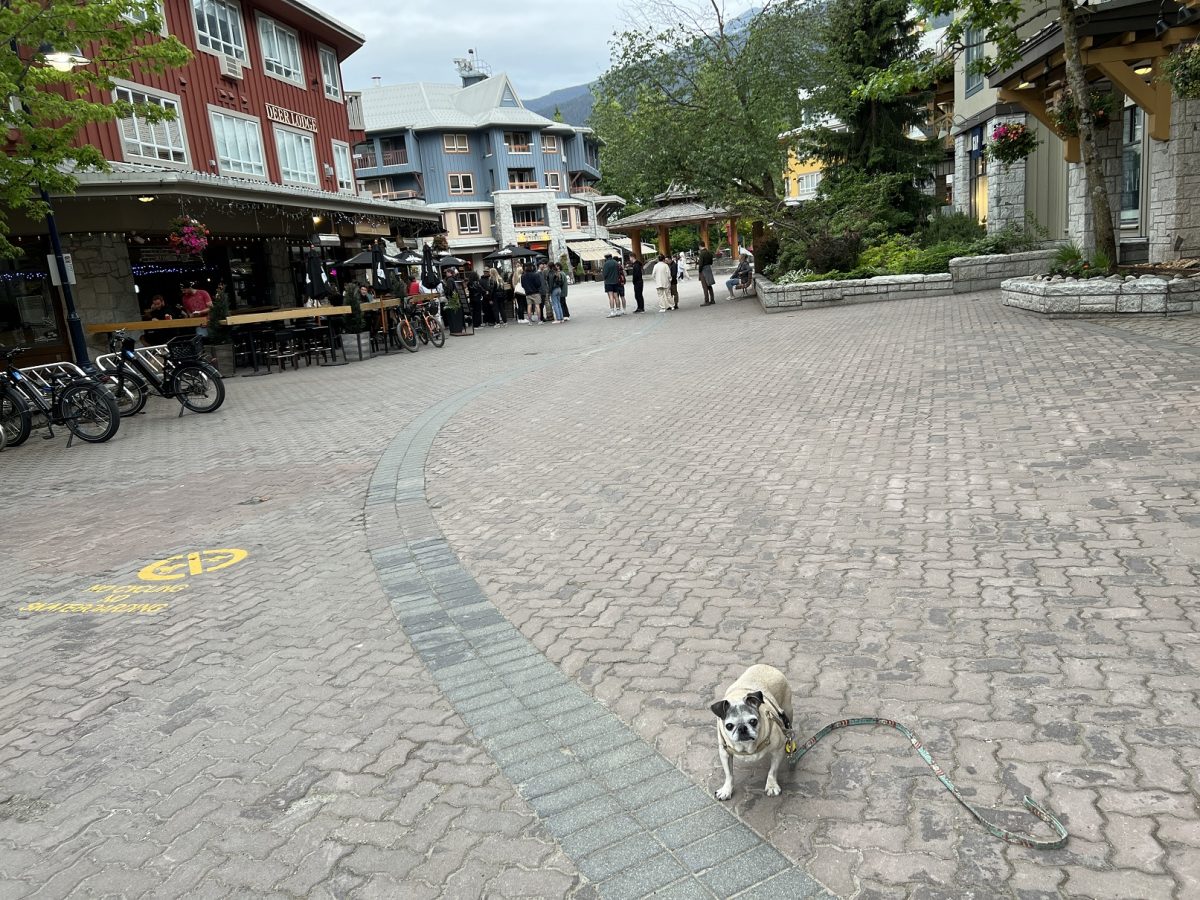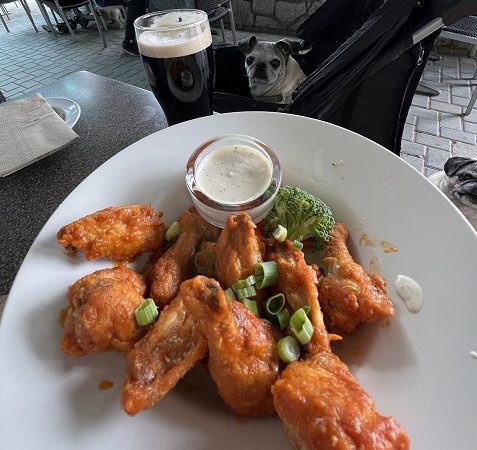Author: Larry St Aubin
Another beautiful mountain drive on Highway 99 as we head to Whistler, BC. But first, a nature walk to a bird’s eye view of Kamloops.
The Resort Municipality of Whistler is grateful to be on the shared, unceded territory of the Lil’wat People, known in their language as L̓il̓wat7úl, and the Squamish People, known in their language as Sḵwx̱wú7mesh. We respect and commit to a deep consideration of their history, culture, stewardship and voice.
“The Coast Salish First Nations people inhabited the land around Whistler for many thousands of years, hunting and gathering and living a nomadic lifestyle long before European settlers arrived. The Whistler area was often a waypoint for First Nation trading routes between the Squamish and Lil’wat Nations, as it was rich with wildlife and resources. At one time, tens of thousands of Coast Salish First Nations people lived, traded and thrived in the areas between Vancouver, Howe Sound and Lillooet. In fact, some of the hiking routes between Howe Sound and Deep Cove (east of Vancouver) are the traditional routes travelled by the Coast Salish First Nations peoples.”
Kenna Cartwright Nature Park, Kamloops. We have time this morning to hike a trail at this wonderful park. Kenna Cartwright offers an extensive network of gentle nature trails for hiking or cycling with panoramic views of the city, the Thompson Valley, Kamloops Lake, and the convergence of the North and South Thompson Rivers.
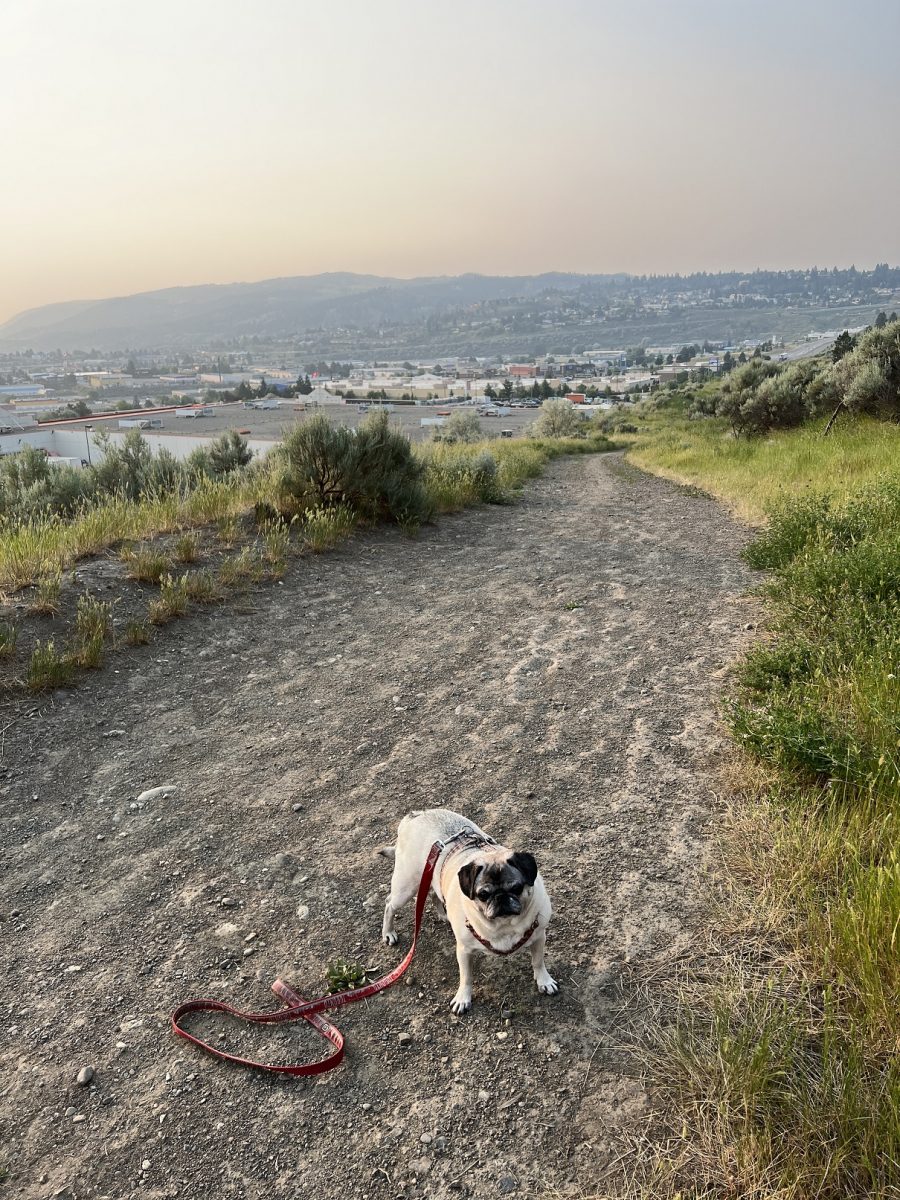
Established in 1996, Kenna Cartwright Park encompasses almost 800 hectares of Mount Dufferin, making it the largest municipal park in the province. The park is named in honour of Kenna Cartwright, former Councillor and Mayor of Kamloops, and long time supporter of parkland preservation.
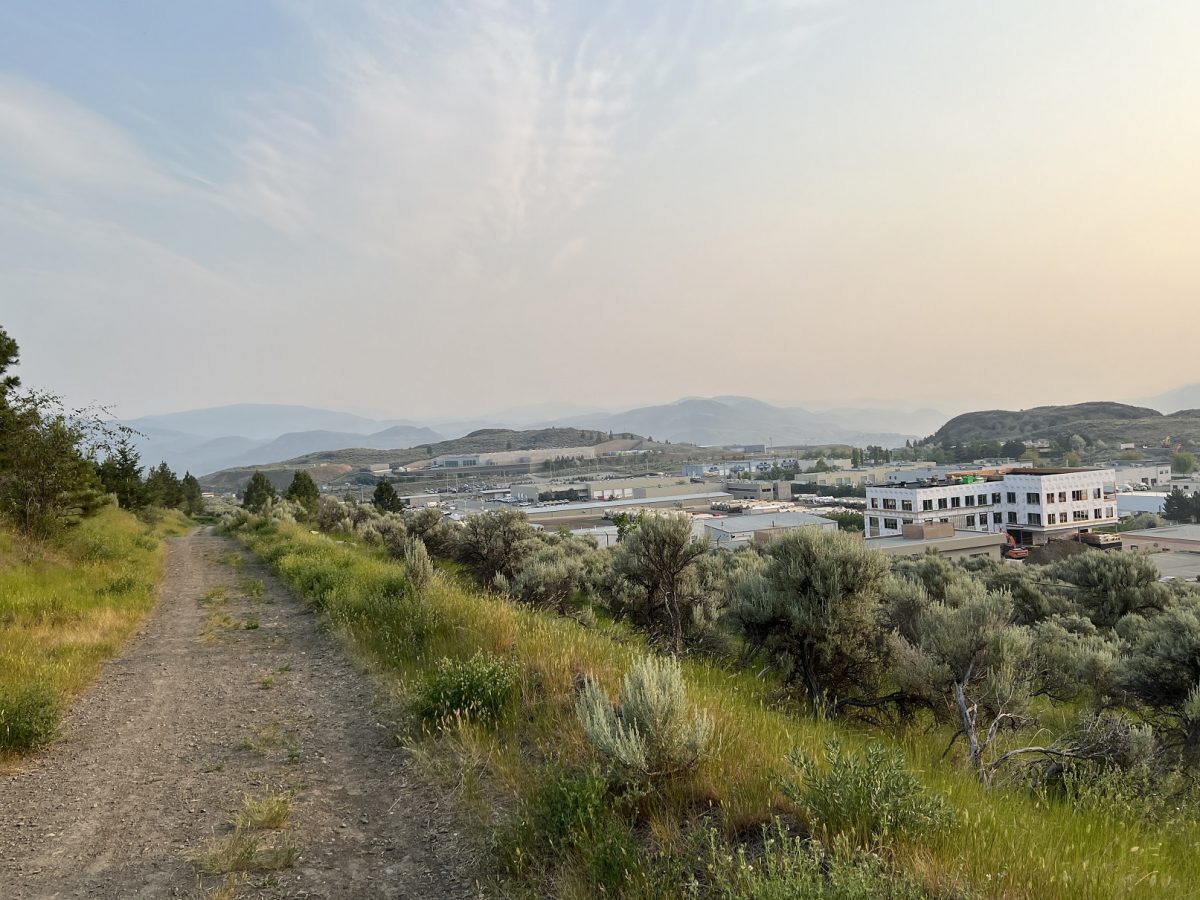
Kenna Cartwright Tower Trail is a great option for anyone with kids or pups. The hike is a very nice gentle incline with a rewarding view. There is a wide path which makes it nice to walk and talk with friends if there’s a few of you going. There are also multiple benches and picnic tables at the top for resting.
However, we only went to the first level. Would have got a better view of the valley but I knew I’d be stopping along the highway a few times so wanted to make time for that.
The Gold Rush Trail. We were taking highway 99 south, known as the Gold Rush Trail by BC Tourism. It is a long, winding descent for two hours to Lillooet. My pleasure of the drive is right up there with the Cabot Trail, Quebec’s Gaspe, highway 5 in Nelson and the Hanna Road in Maui. You can’t just stop anywhere because of the danger to with other traffic. Have to keep a lookout for pull offs.
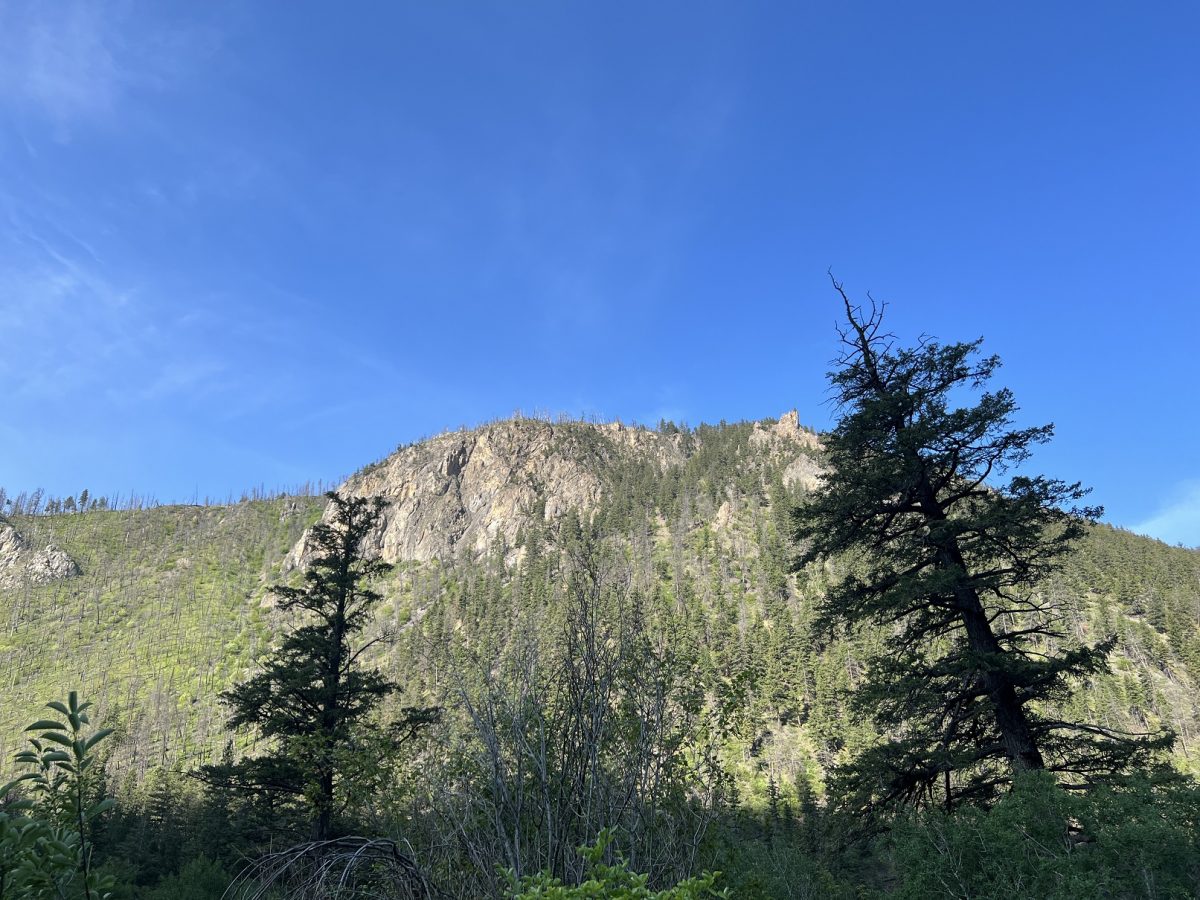
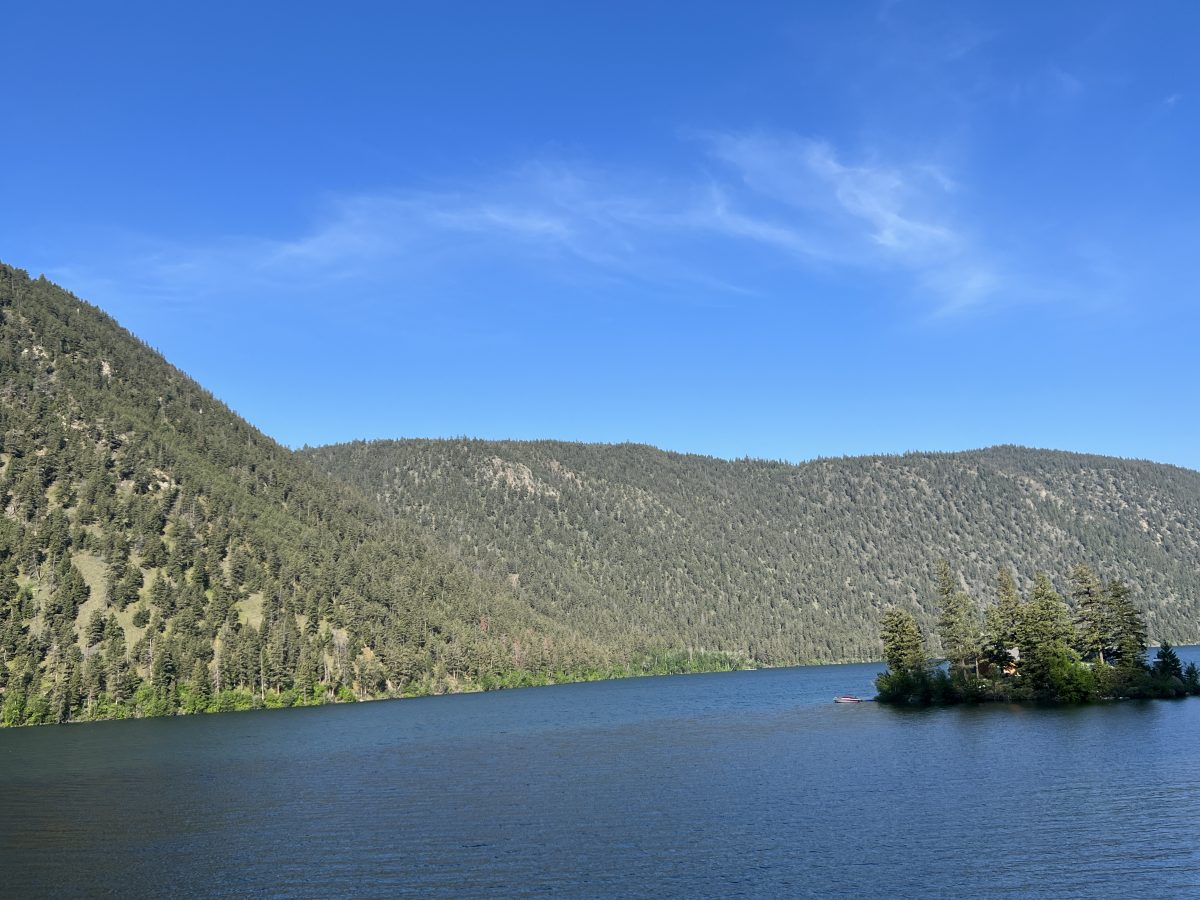
It follows Cayoosh Creek for about 50 km.
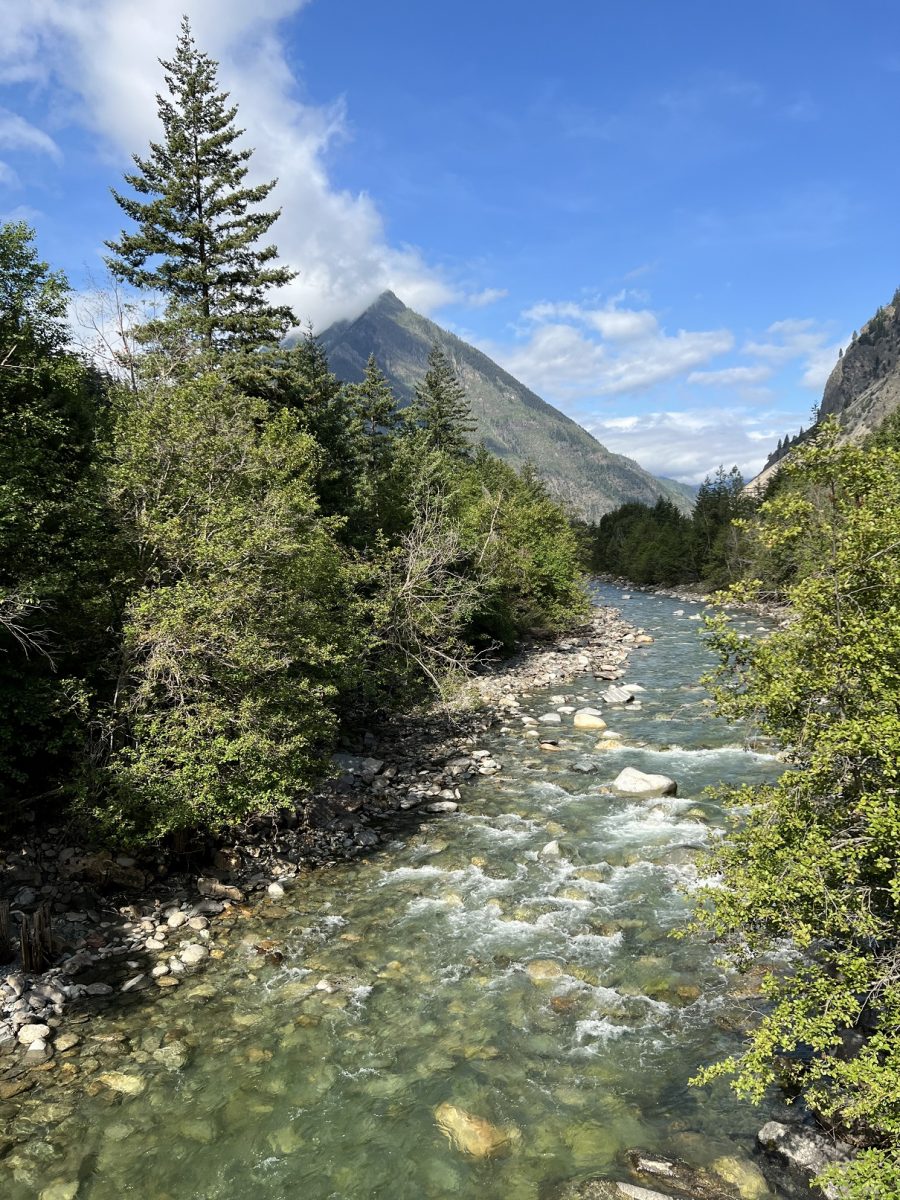
Lillooet, BC. Just before reaching Lillooet, in the base of a canyon, I stopped the car and took a video to give a sense of the majesty of this place.
A-bun-dance Artisan Bakery. I had read about the place when researching for a coffee stop. It was the perfect place. It was a warm, sunny morning. Benches outside. They had a great selection of sandwiches but I had had breakfast at the hotel. Just needed a snack that Eve could keep an eye on.
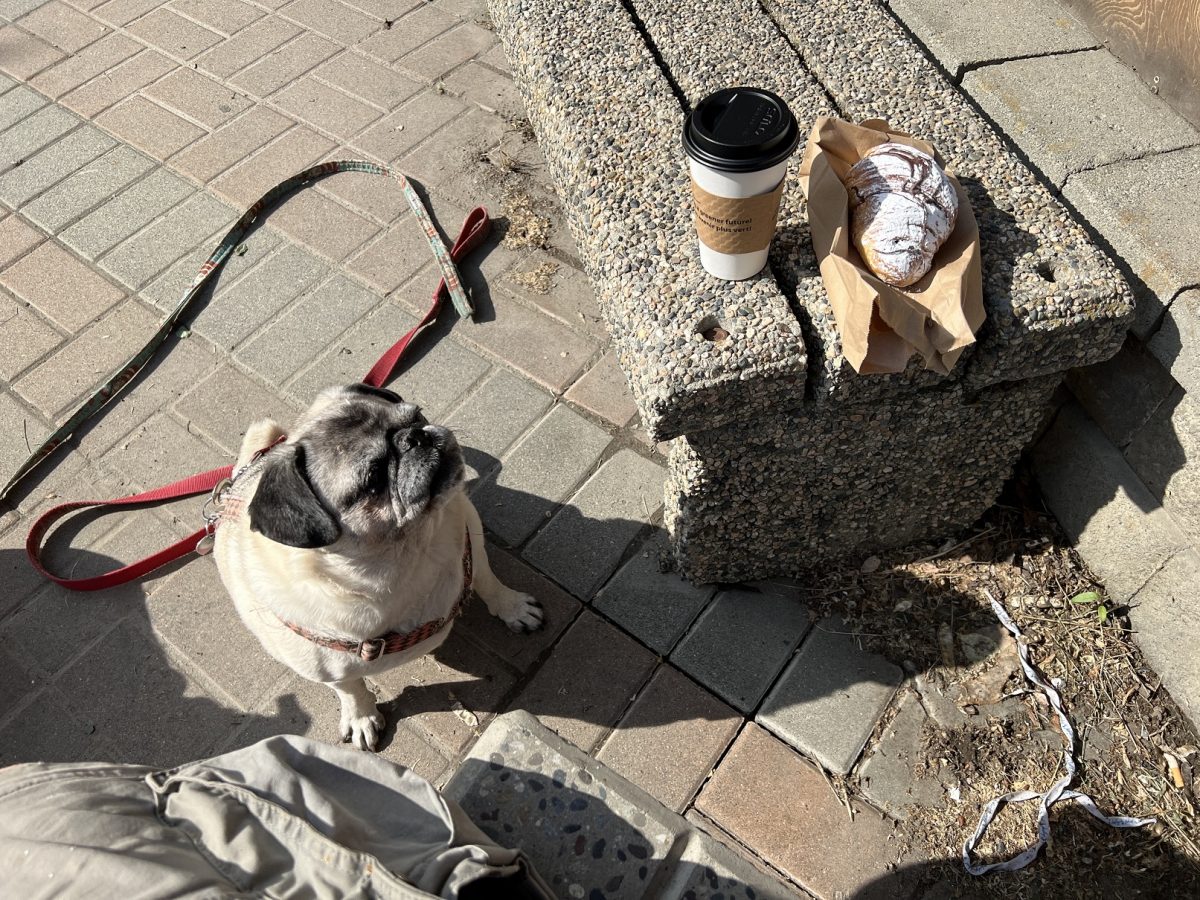
As we were sitting there, a drum circle started up. Decided that was a signal to make a video of the scene.
As we continued our route to Whistler, we started to ascend. There were a few more pull off areas. I stopped often just to breath the mountain air and watch out for bears. Actually I was in the car driving about 40 km when I turned the curve and there he was. I took a picture as I was passing by.
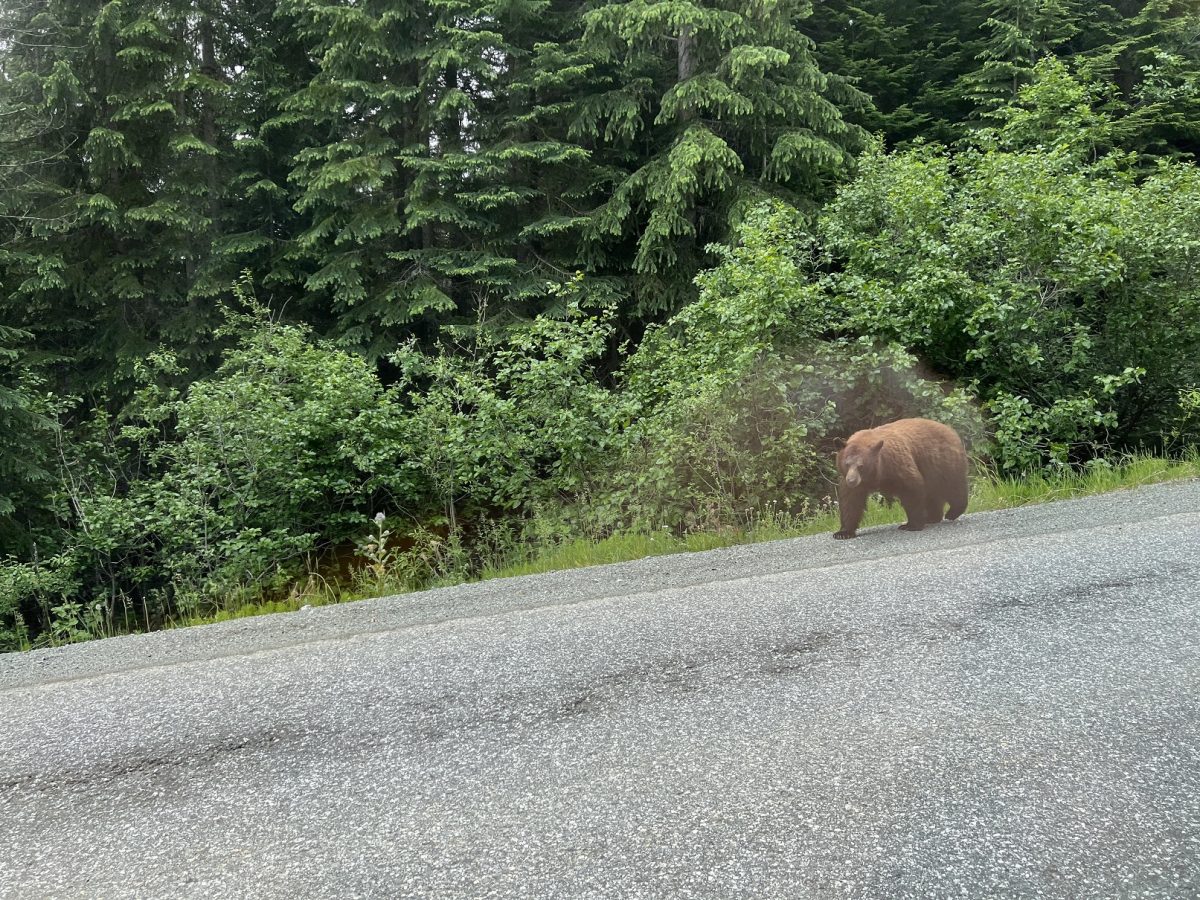
Lost Lake is a small lake within walking distance of Whistler Village and is a popular attraction with a beach area and surrounding trails for hiking and biking. There is an urban nature trail that goes to Canine Cove.
This was going to be our morning activity in Whistler. However, when I got to the parking lot there were all these No Parking Tow Away signs. Apparently the lot was closed due to construction – although I didn’t see any construction going on. We would have had to park 2 km away and walk it, plus the trail.
Ancient Cedar Trail. A waitress at The Nobel Pig in Kamloops had told us about the Ancient Cedar Trail with huge cedar trees. I followed the GPS and it led me to an adventure camp that offered eco-tours. The woman explained that the trail head was about 3 km up dirt road that was not accessible by car. So that activity was quashed.
Delta Hotel Whistler. Staying downtown in the Delta “Village Suites”. This was one of the more expensive hotels on the trip but I need to do laundry.
I was in luck because I went to our Delta Marriott hotel around noon and our room was ready. I was able to get the pugs settled. then head off to the Squamish Lilwat Cultural Centre
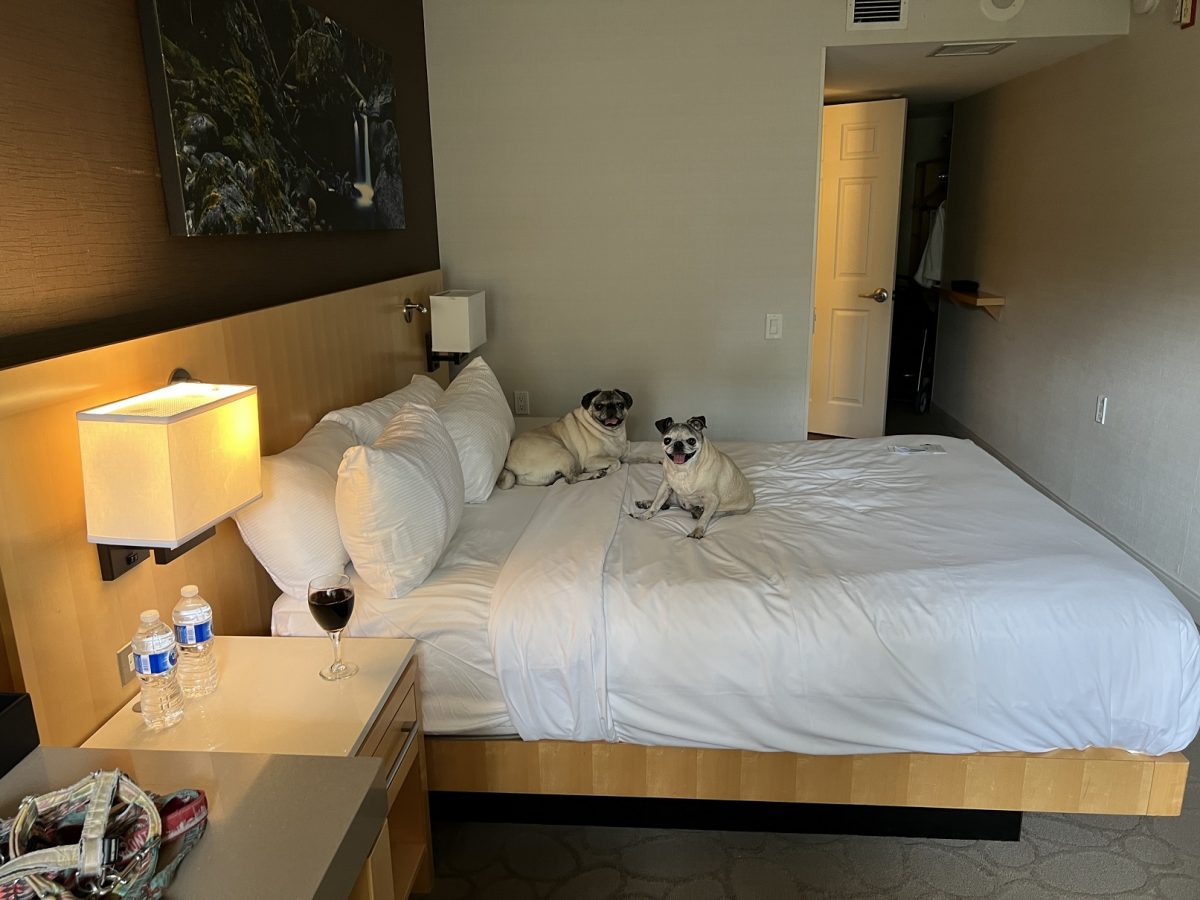
Usually I find the pet-friendly rooms are placed at the back of the hotel. The view out the window is either a parking lot or another building. Nothing spectacular. Our room had a pretty cool view.
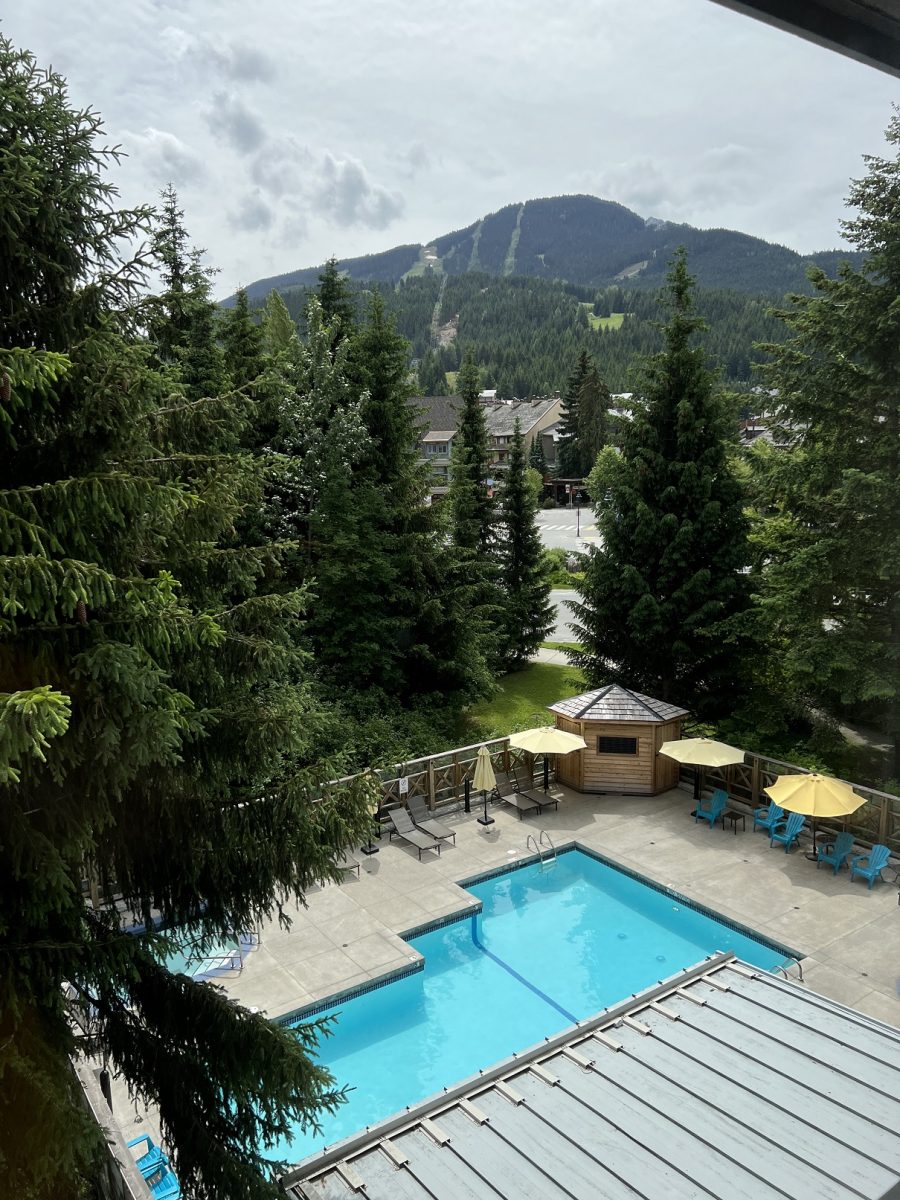
The Squamish and Lil’wat Cultural Centre. I found out about it through their website. I was hoping to take a tour at this centre but they closed at 5. With the pugs sleeping back at the hotel, I was able to take the 1pm tour.
The Squamish and Lil’wat are 2 First Nations that have lived in the Whistler area. The Squamish to the south and Lil’wat the north. They came together to share the land around Whistler. They created this culture centre 14 years ago to tell their stories and bring back many of the lost traditions.
Our guide began with a song and a drum. The song was about a man who travels the world looking for good. I told her I could relate. Next there was a 15 minute movie. It first showed the Squamish culture, then the Lil’wat. It described the importance of the forest – where they get cedar bark to make baskets. The river with the abundance of salmon for sustenance. The mountain for the mountain goat where they get both milk to make cheese and hair to make clothing. The movie was very well produced.
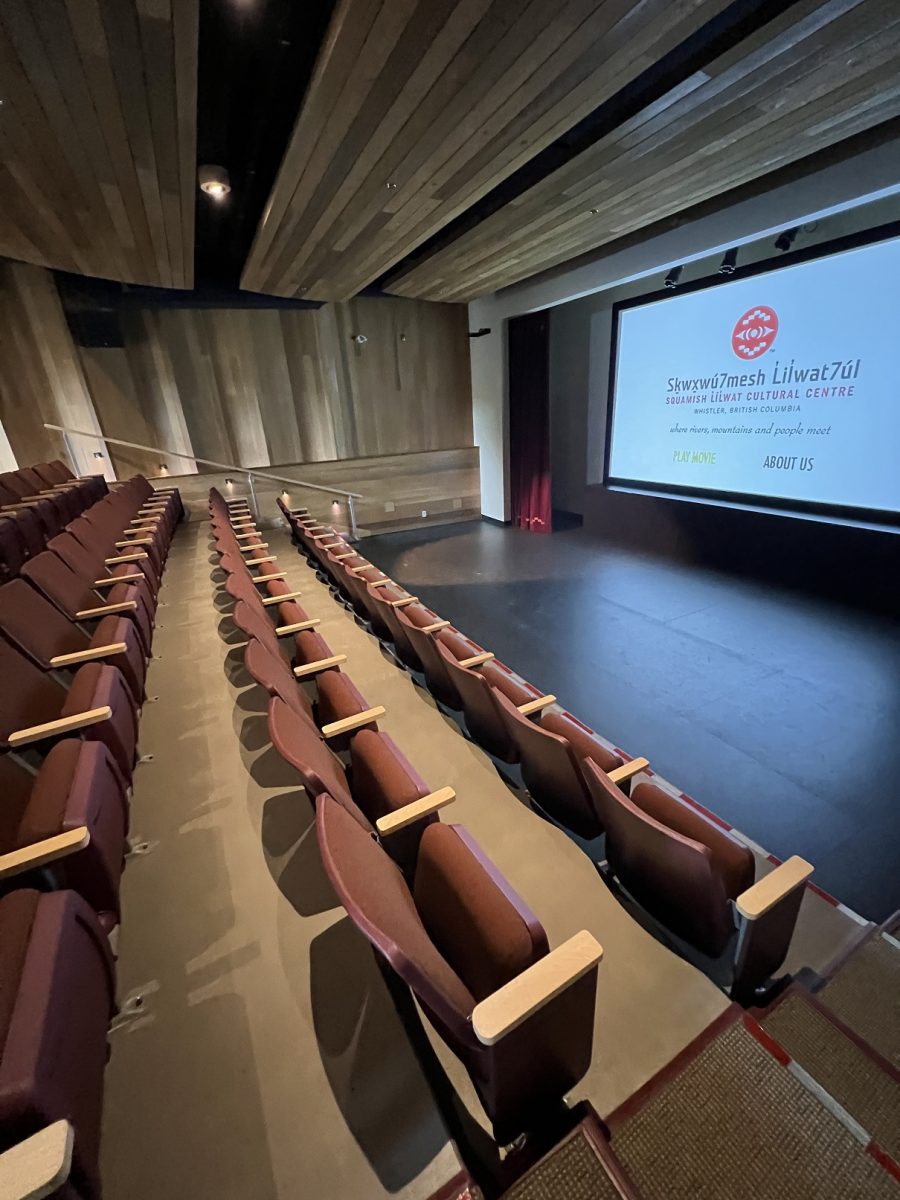
The centre has cultural ambassadors who go out into the community to tell the stories of these peoples. They will use these masks as part of the telling. The bear is about family, the bond between mother and child. The people learned about which berries to eat by watching bear.
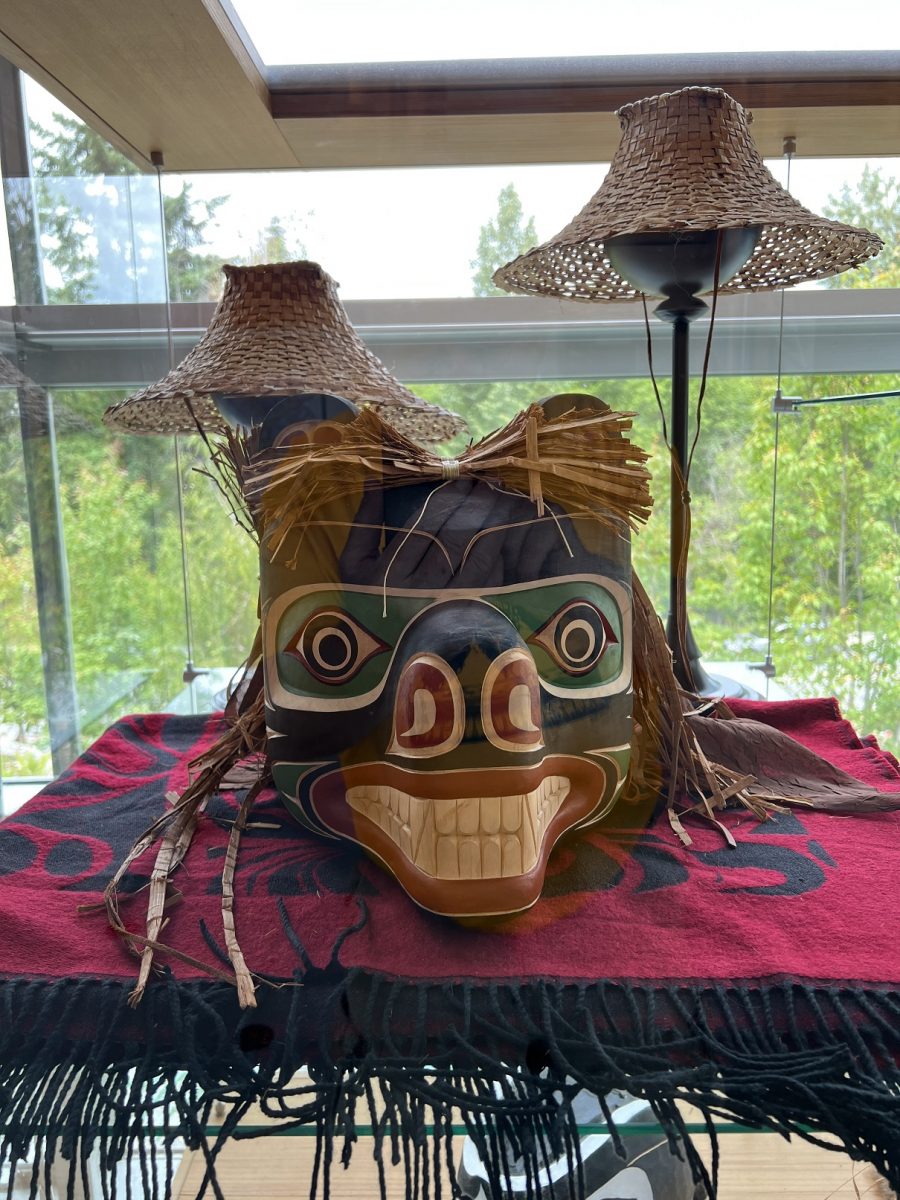
The eagle flies the highest. They teach to look at the wider picture, not just the details. They send their prayers to the eagles as the eagles carry them to the creator.
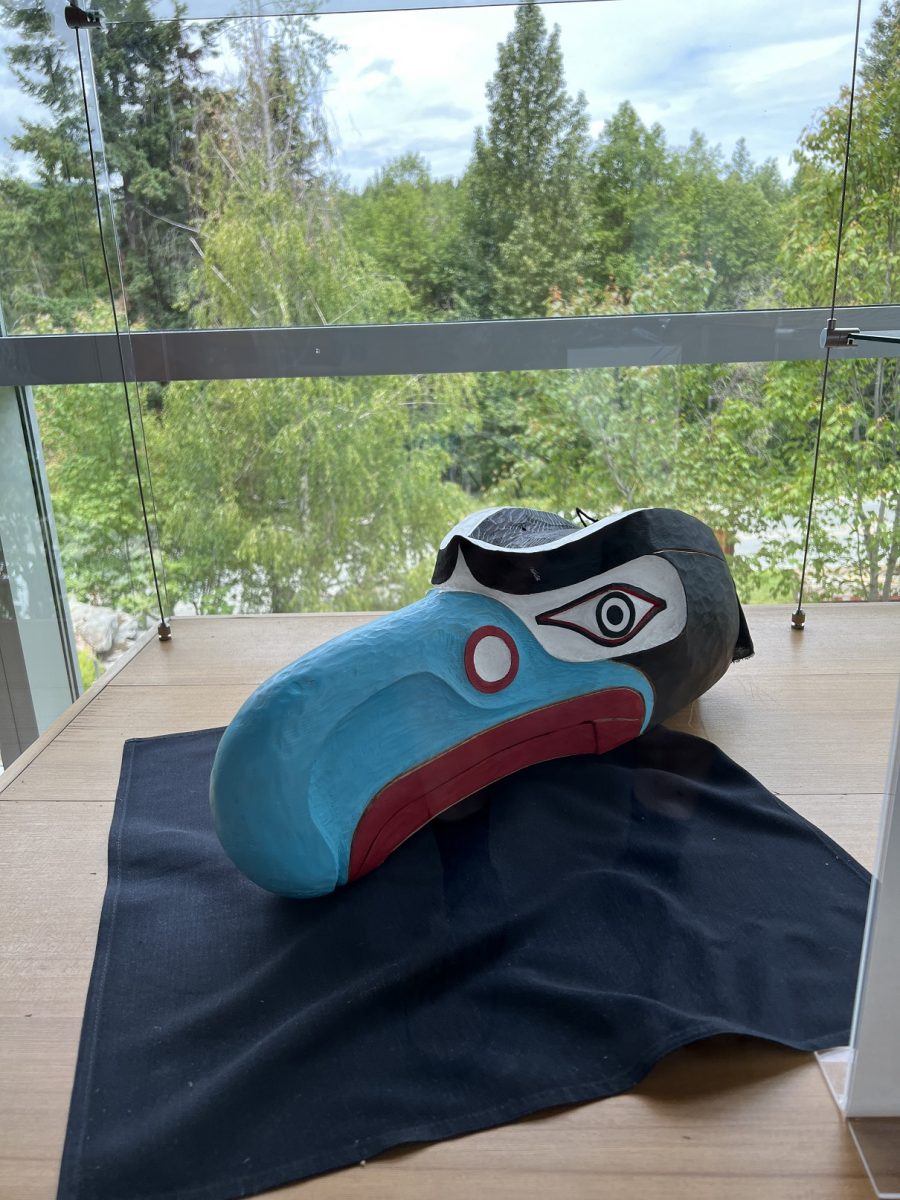
This totem pole was first purchased by a woman who wanted to gift it to her husband. It was placed withing a grove a trees. Over the years it was forgotten about. One day the owner of the the land decided to remove the trees and discovered the pole.
That is Thunderbird on the top. The difference between Thunderbird and the eagle is that Thunderbird always has the two extensions on the top of the head.
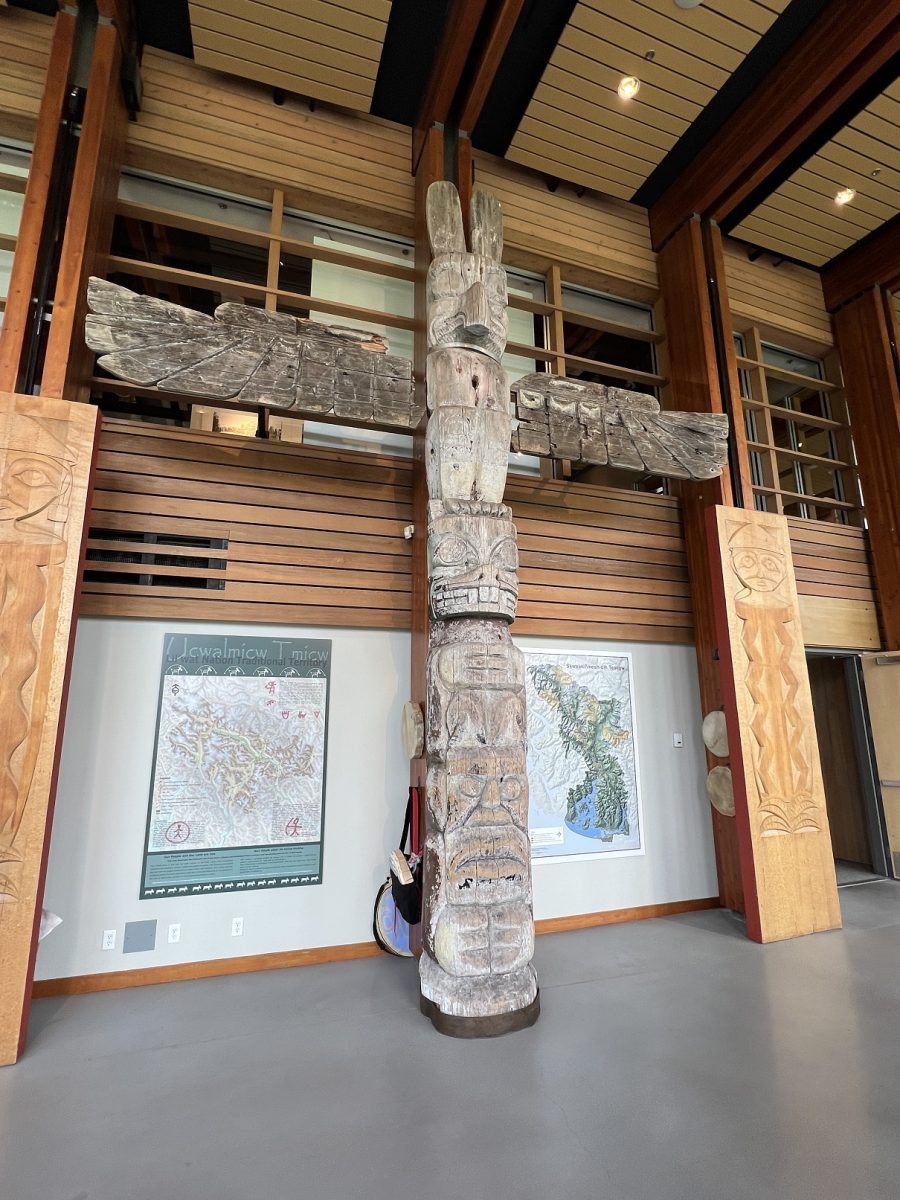
Thunderbird is concerned with law and justice. He intervenes when there are tribal disputes. He roosts at the top of Black Tusk mountain in Garibaldi.
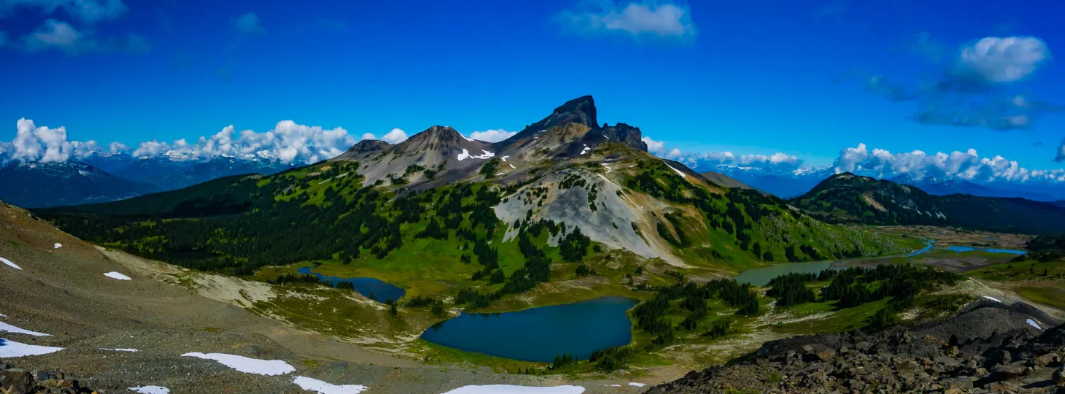
This canoe is very special. the bevelled edges allow it to float in only ankle deep water. Foraging can be better accomplished, allowing the person to go to places bigger canoes cannot. Its nickname is Sister because another was made like it from the same tree and is called Brother.
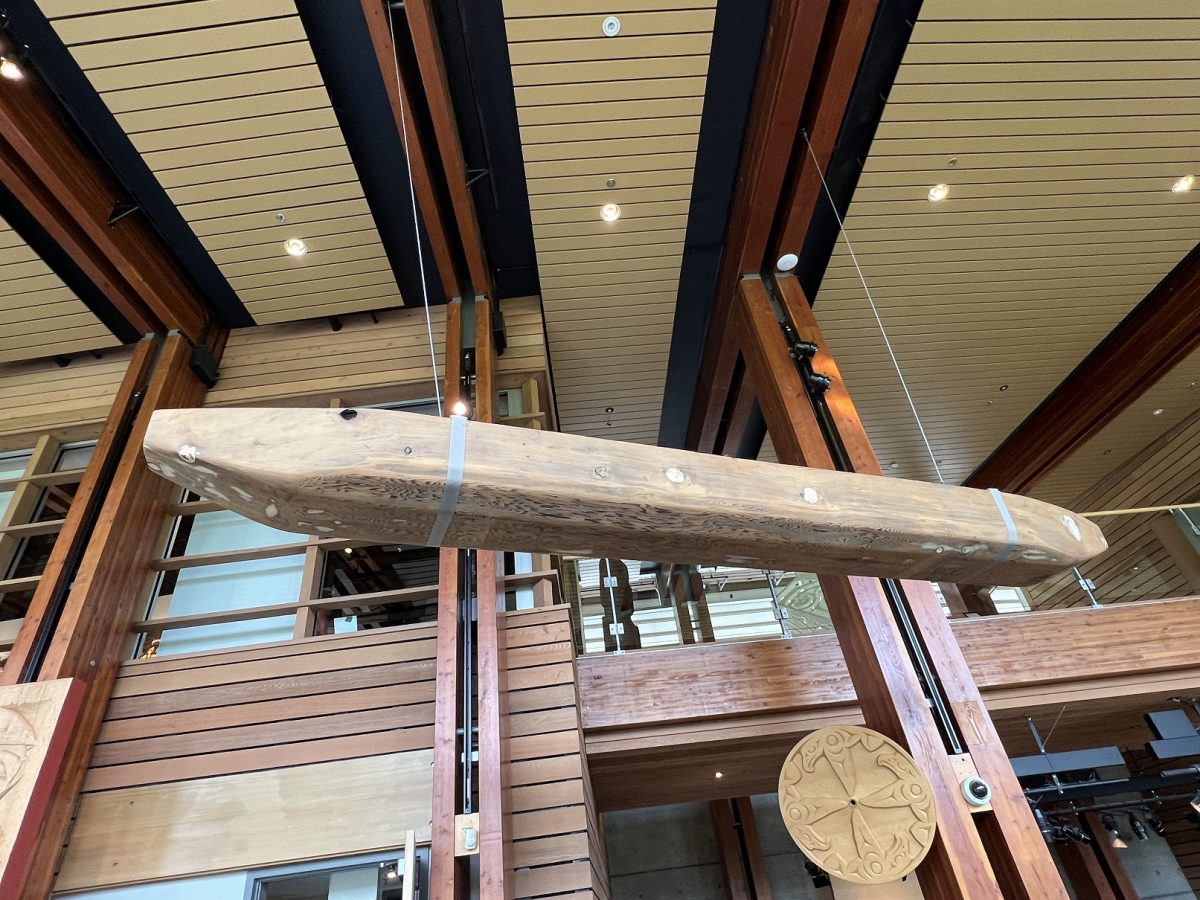
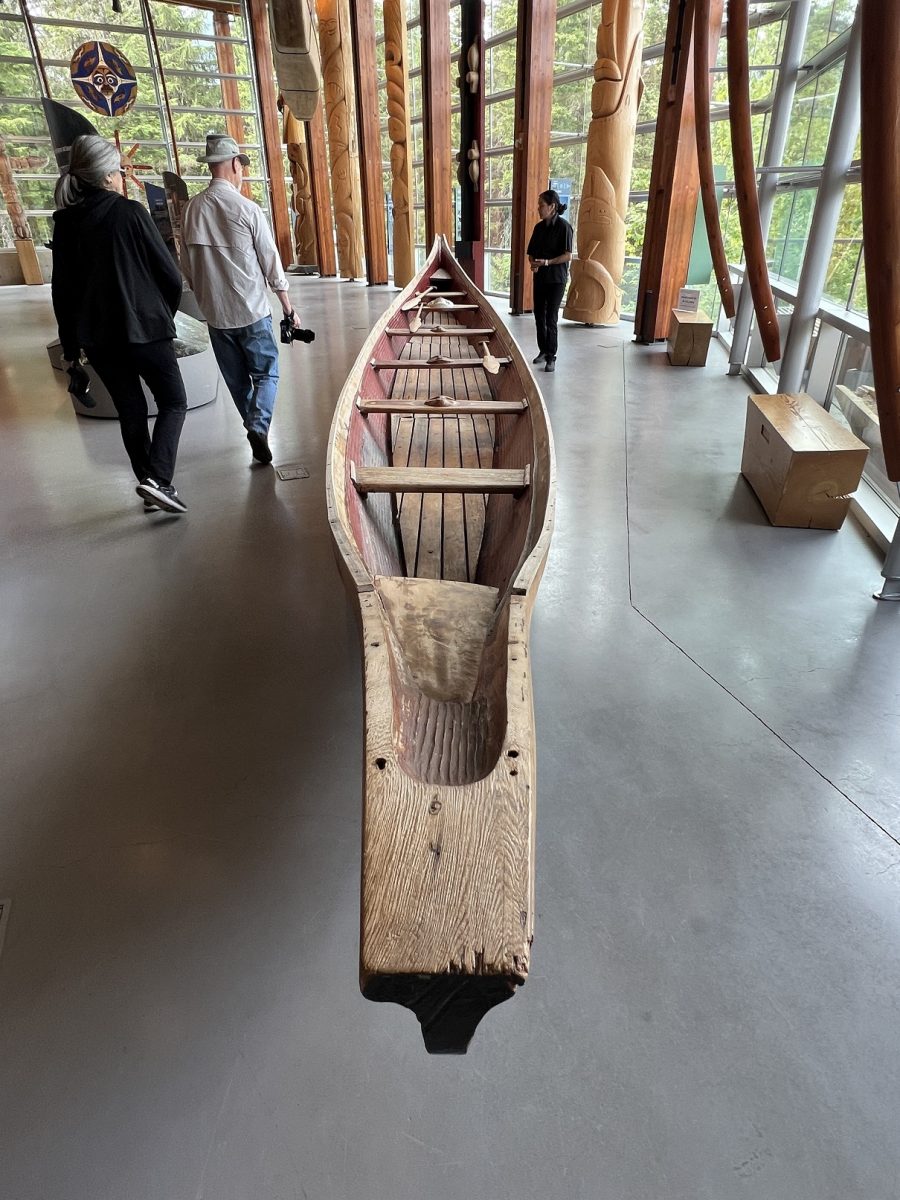
The sea canoe. One person on either end then two people in each of the other seats. The mask would be hoisted on a paddle when they were returning so people on the shore knew who it was.
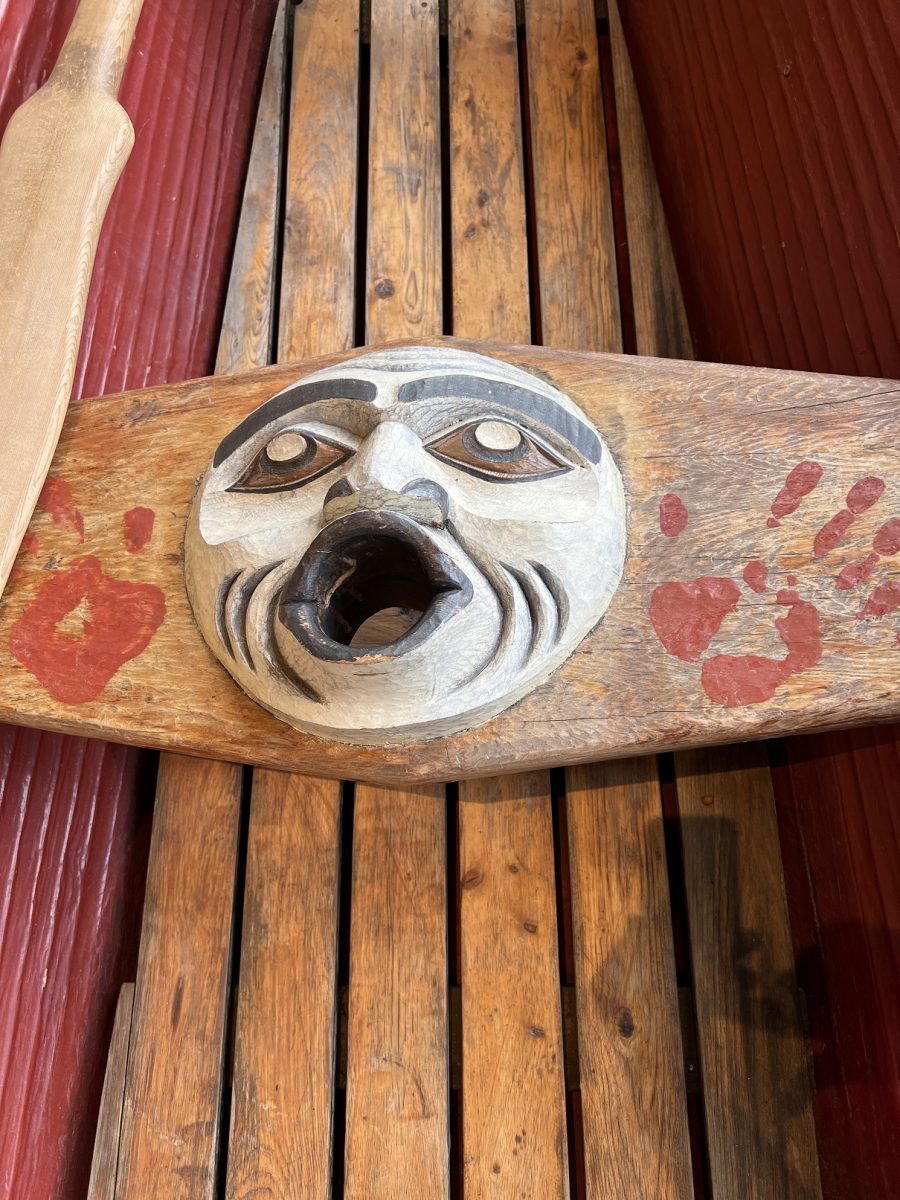
There is a set of 4 totem poles along the window. They are made from yellow cedar whose grain is much tighter, stronger than the red cedar.
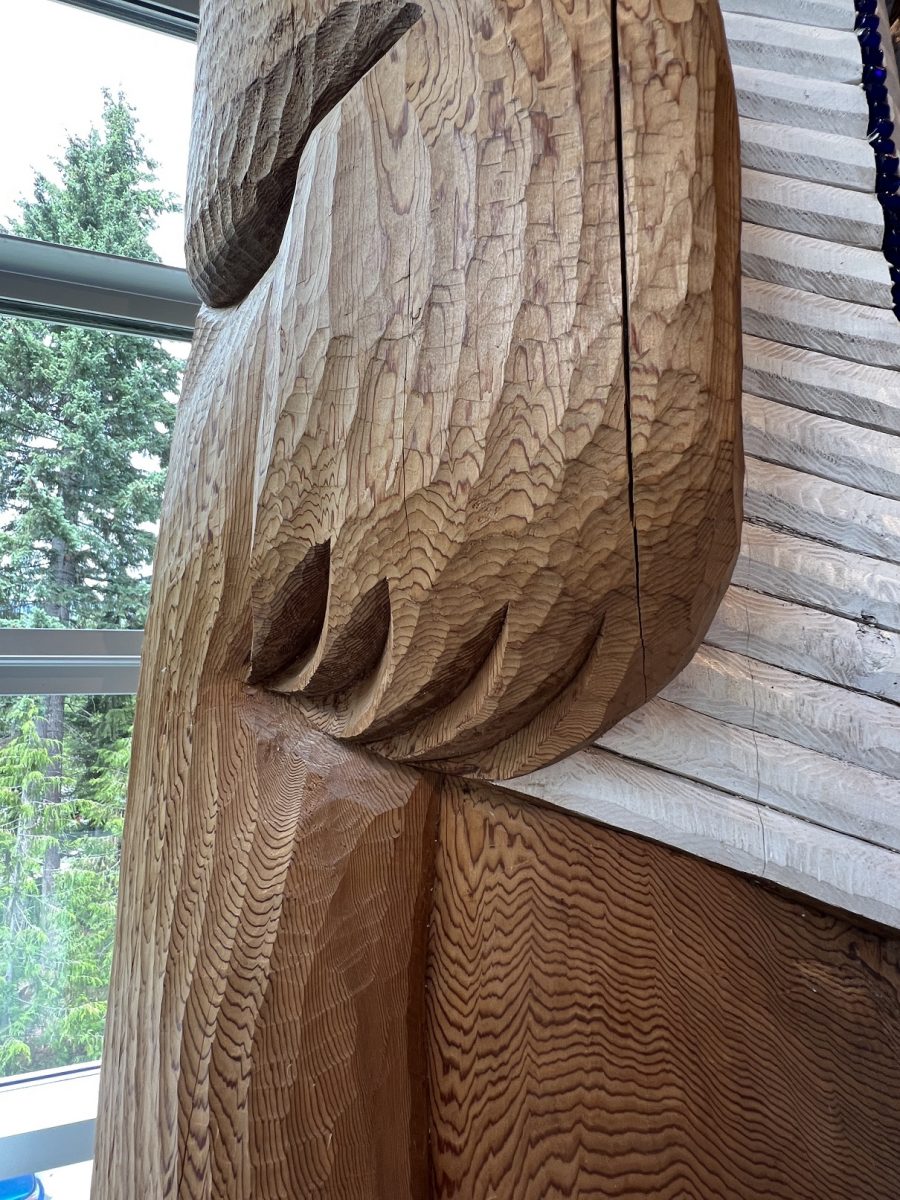
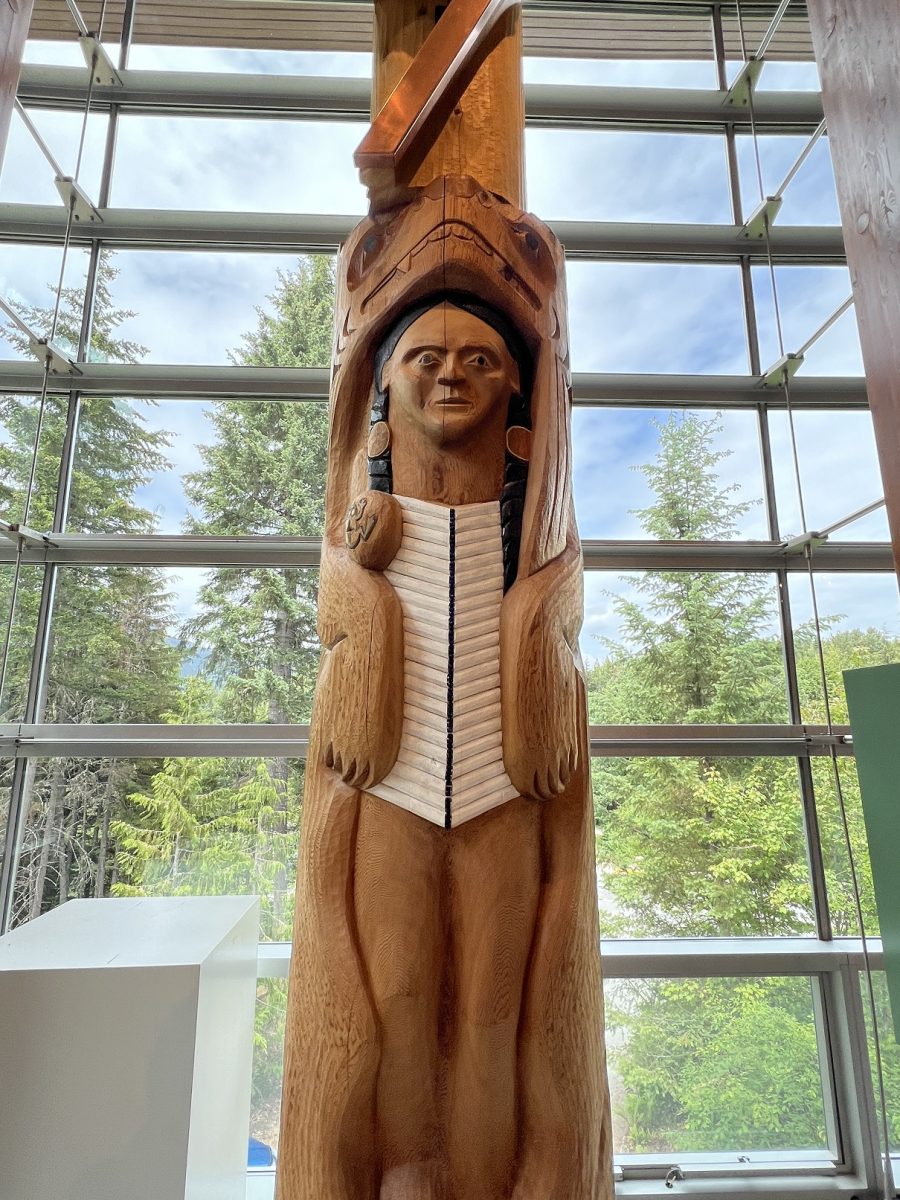
Basket weaving using cedar bark is an ancient tradition. The bark is taken from the tree is strips but with sensitivity. If you place your arms around the tree and your fingers touch, you can only take one strip (the tree is still young). If they do not touch you can take 2 strips but no more. The guide said as people go through the forest they will see trees with the scars of bark removal. They will then thank the tree for its gift.

The regalia was used only for special occasions. It was made from goat hair. However because of the danger of getting near goats, the hair was collected from the ground. This mean it could take years to make something like this.
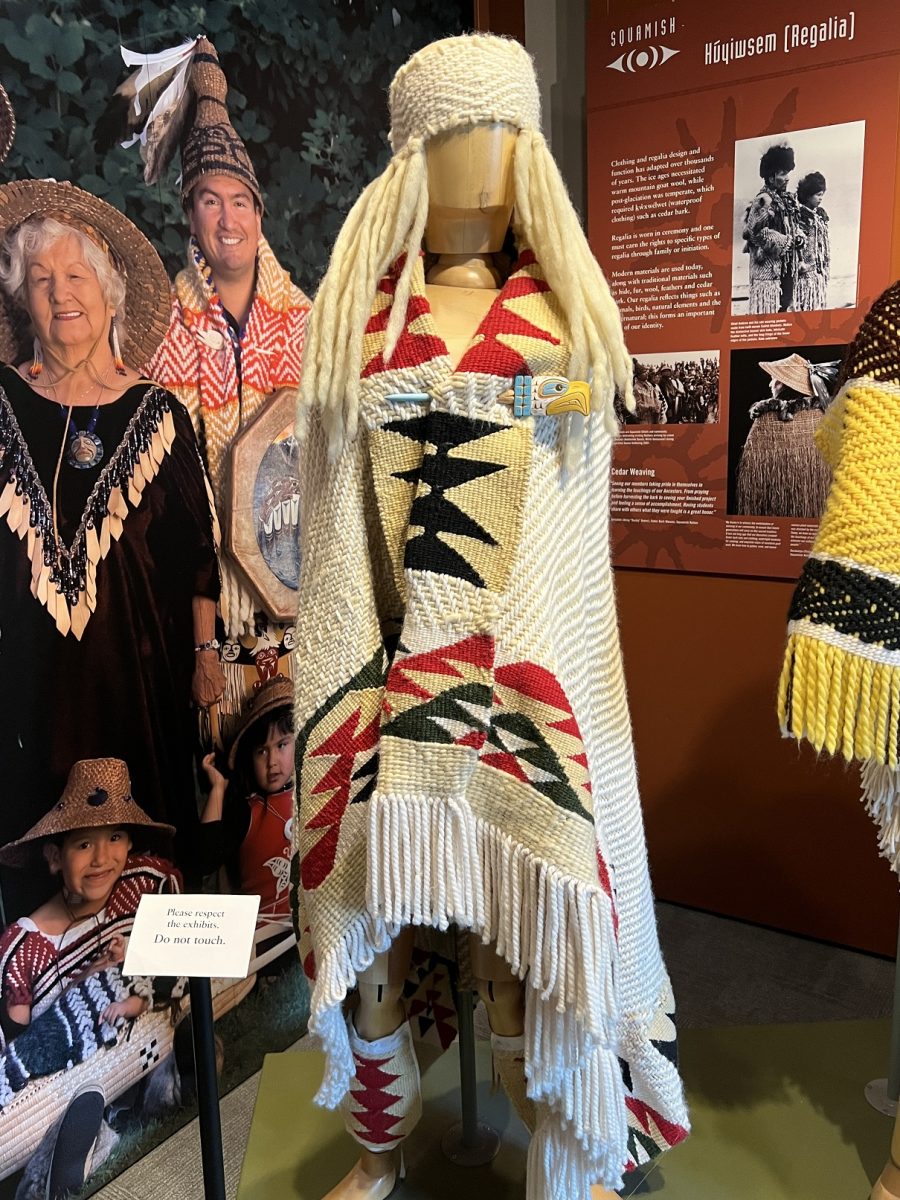
At one time the Squamish did cross breed a little dog whose hair was used for making garments. It was like a Pomeranian. However, because of the continued cross breeding, the dog became extinct. Other materials like deer skin or cedar bark helped with water repellent clothing.
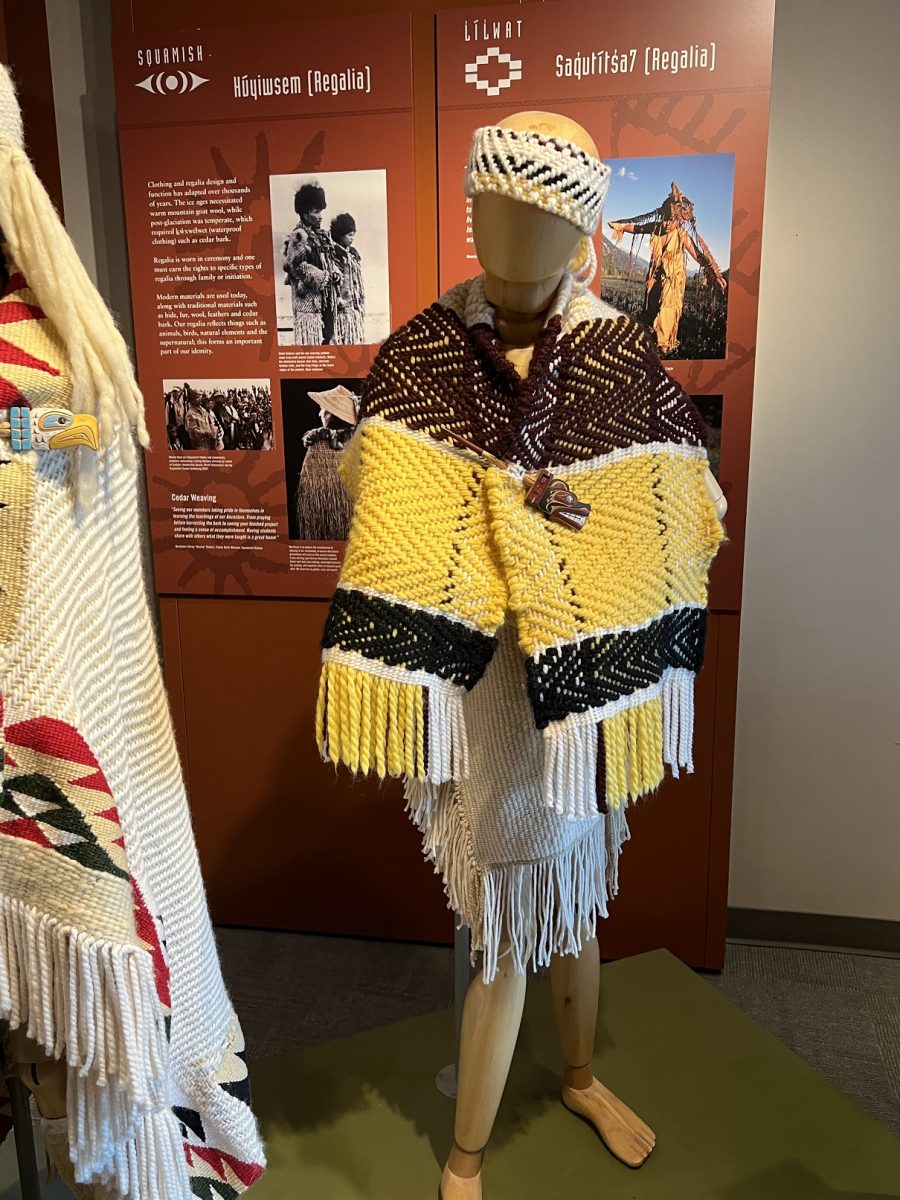
This ceremonial blanket is from the 1920s. When the government was confiscating potlatch goods, a woman wrapped it in newspapers and hid it under the floor. That is how they were able to date the piece. Years later a man was renovating and discovered it. He donated it to the centre. It is made from mountain goat hair and the dye was set with baby urine.
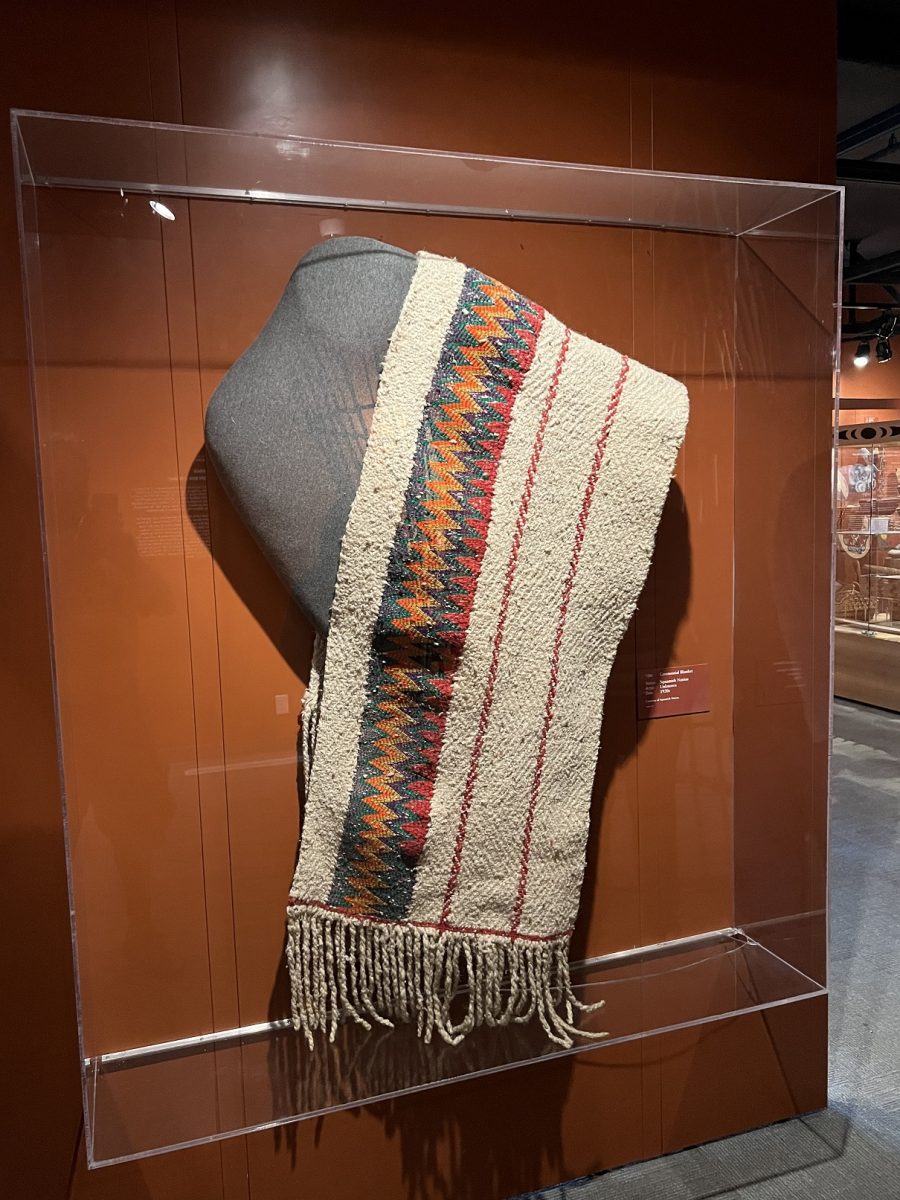
Charlie Mack, of the Lil’wat nation, was the last authentic canoe maker. He died in 1990 but his life is documented in a book The Lil’wat World of Charlie Mack. Here is one of his canoes.
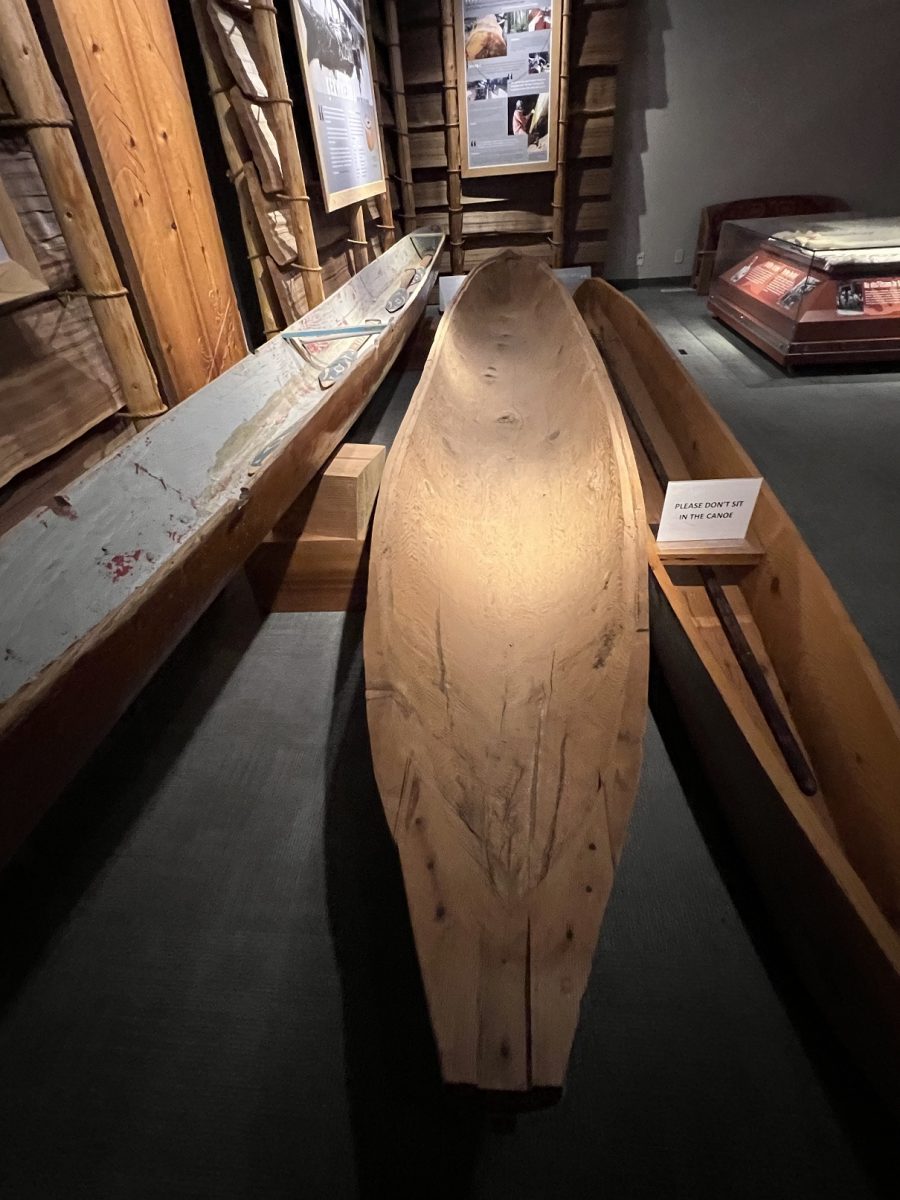
A few more of the artifacts of the museum.
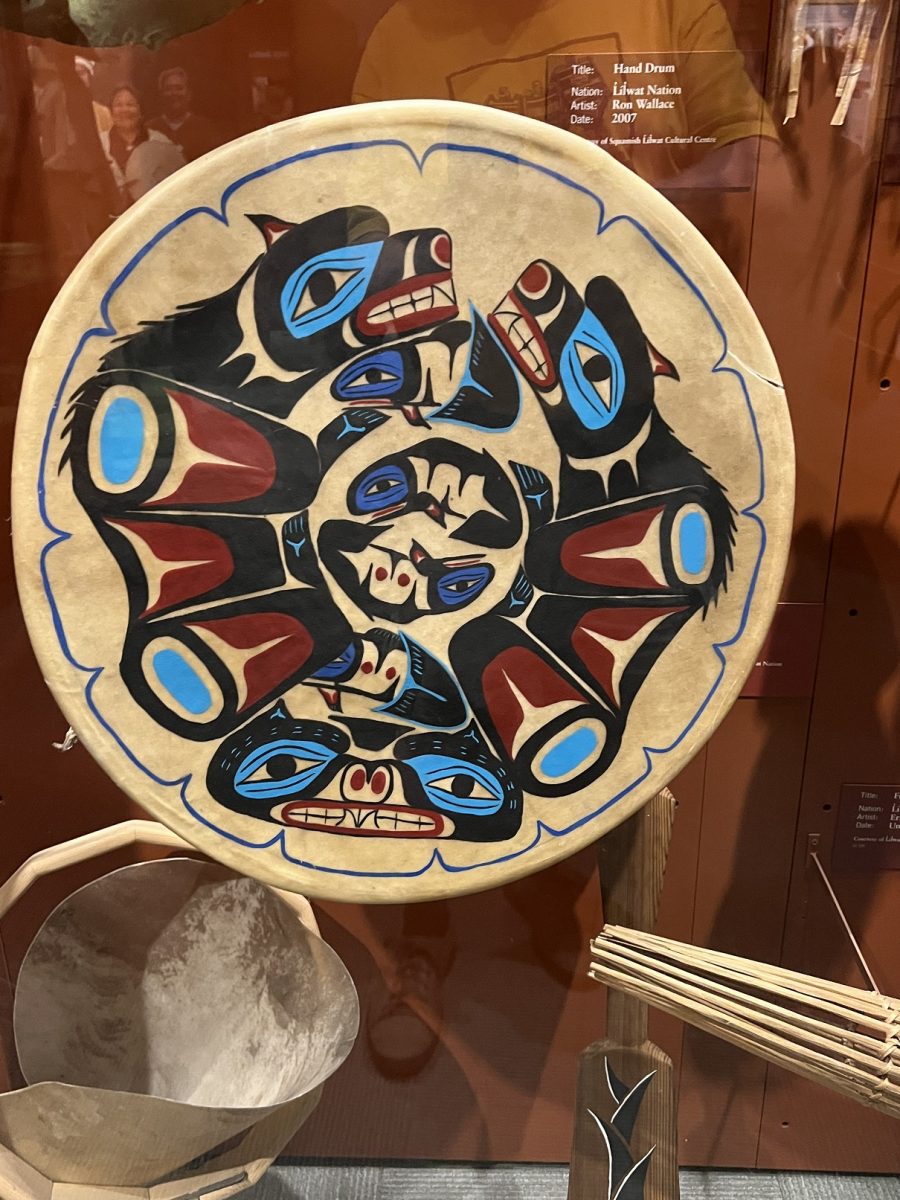
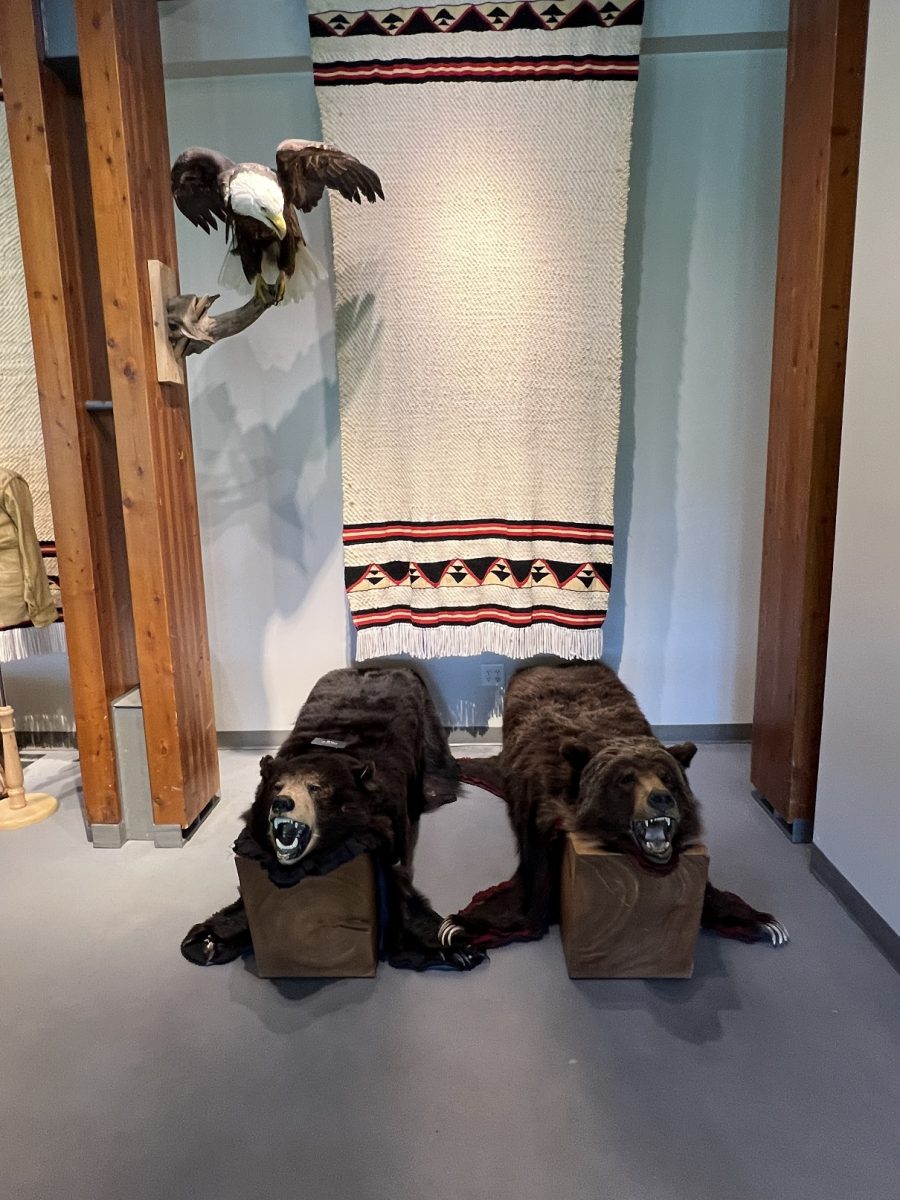
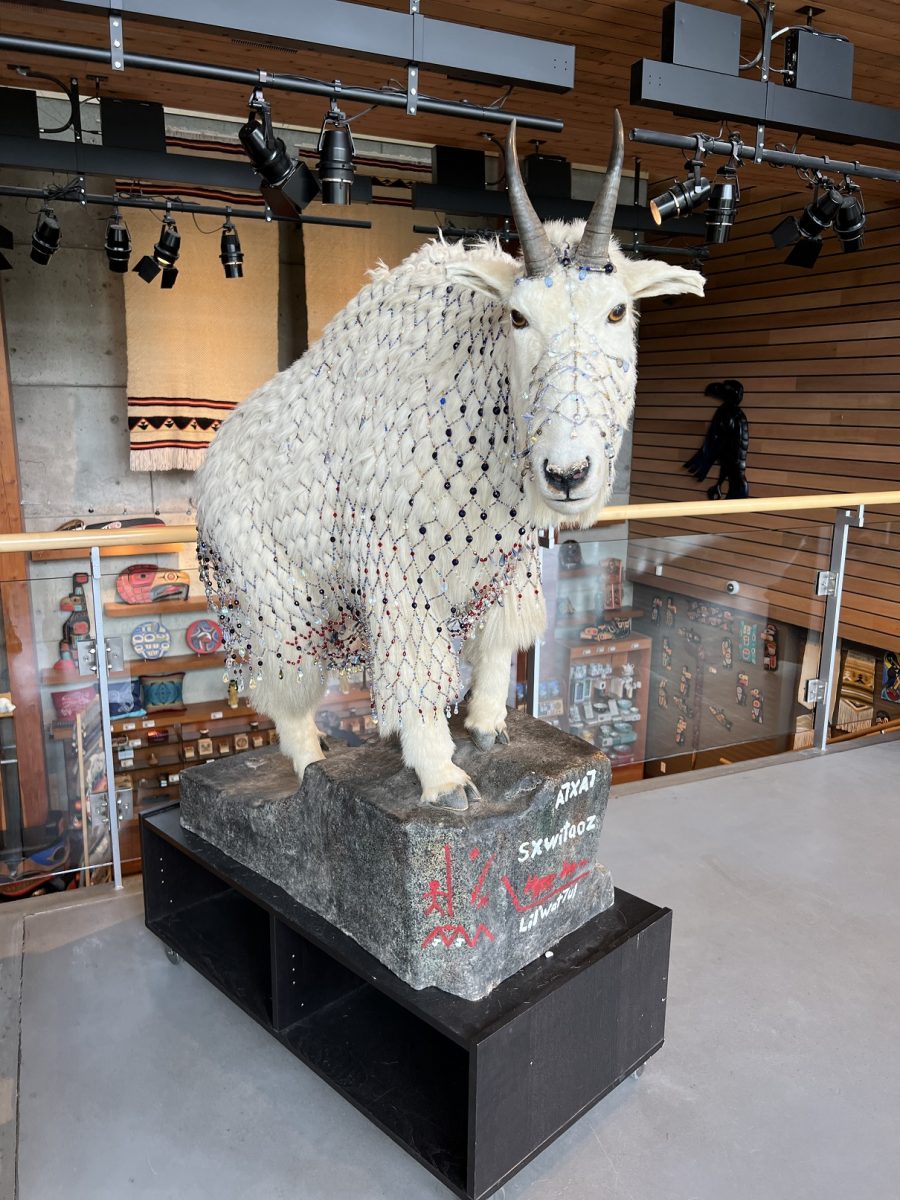
As I prepared to leave I looked back once more at the centre and was really happy I had come. It adds to my appreciation of Indigenous culture.
I went back and took Eve and Greta out to explore the Whistler Village. Whistler Olympic Plaza is a community space, park and performance facility. Established as part of the 2010 Winter Olympics it was the site of the medal awards.
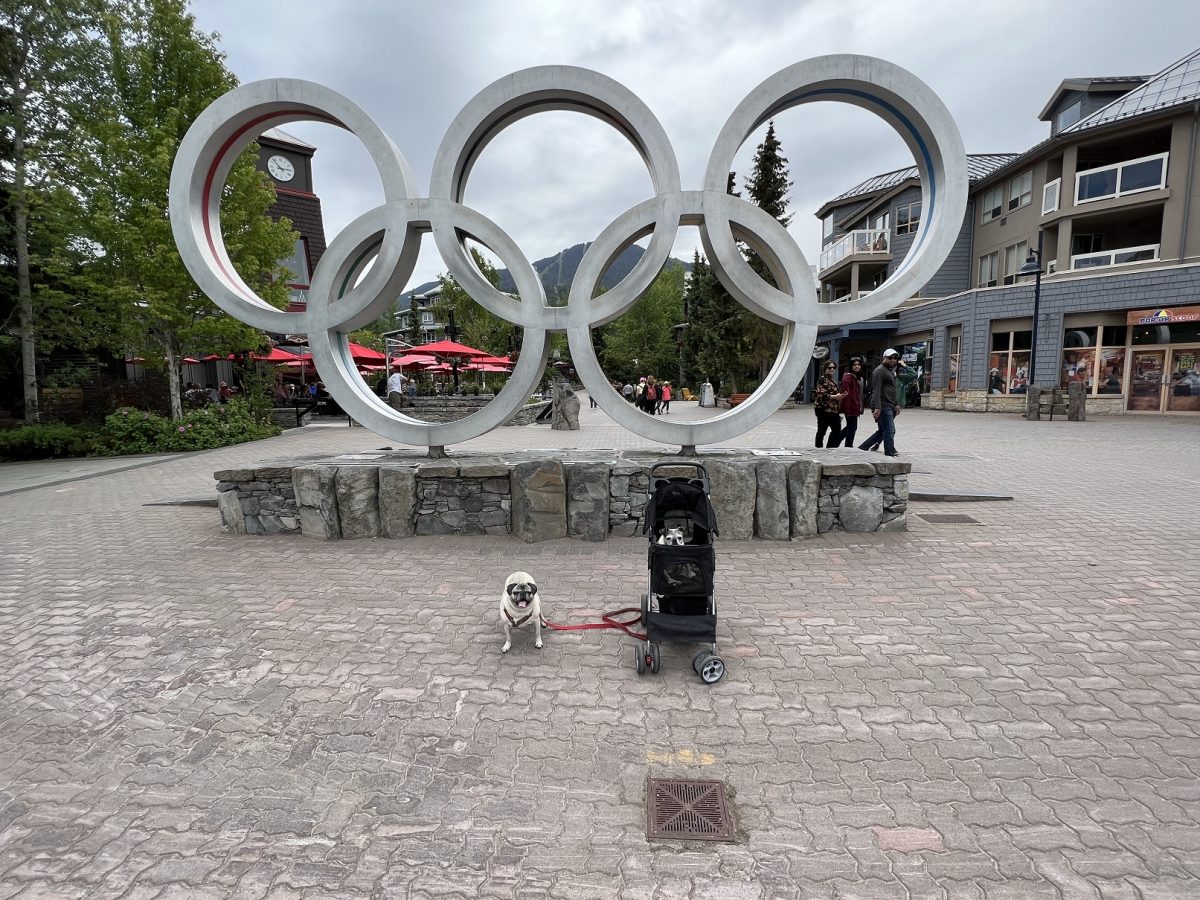
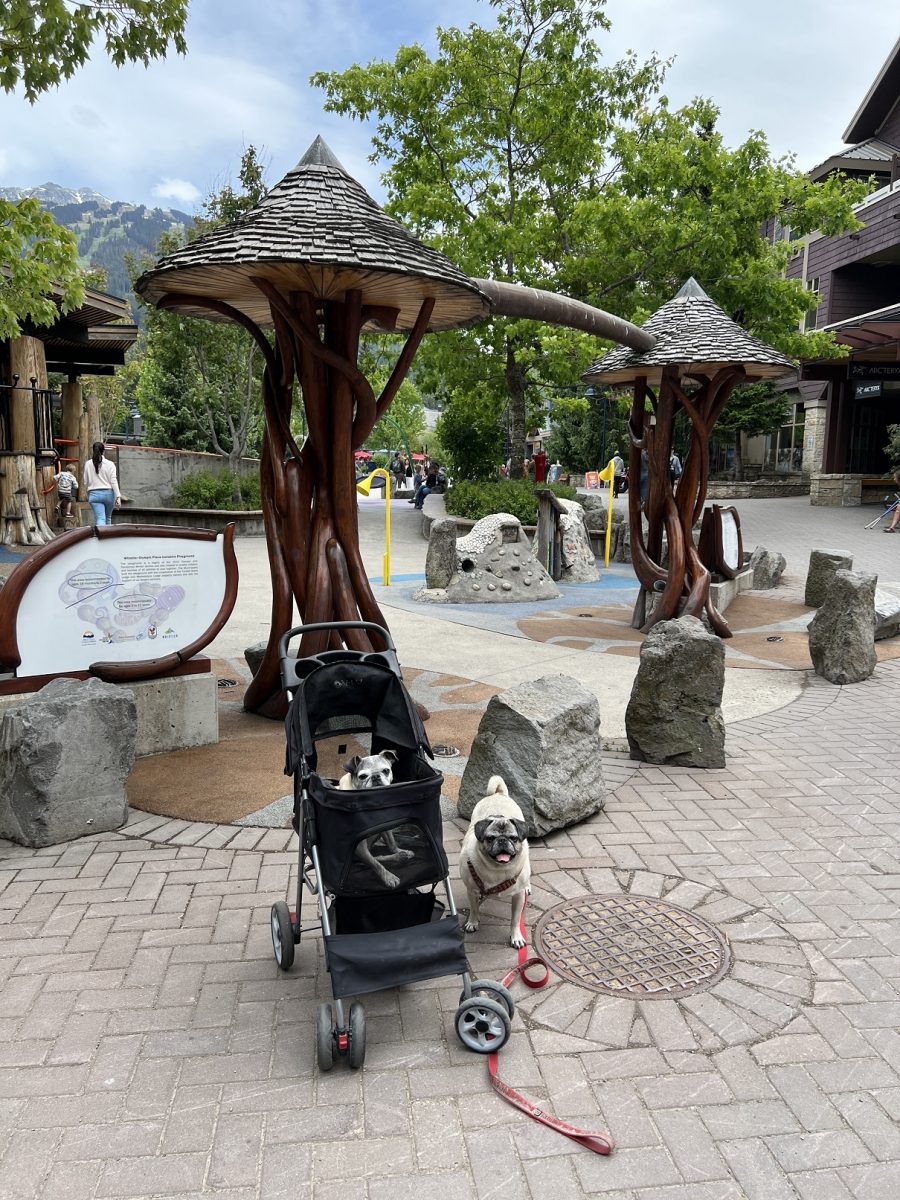
Dubh Linn Gate had a pet friendly patio so stopped by for a pint and wings. Our waiter was gushing over Greta. He has a Pug and French Bulldog. He brought out a couple of pieces of bacon. I explained that she only had 4 teeth left so needed the bacon to be in small pieces. Greta was stretching her neck out over the stroller’s edge to get to the bacon. Meanwhile, Eve had left me and my wings to go and sit obediently next to the stroller for bacon (which she got).
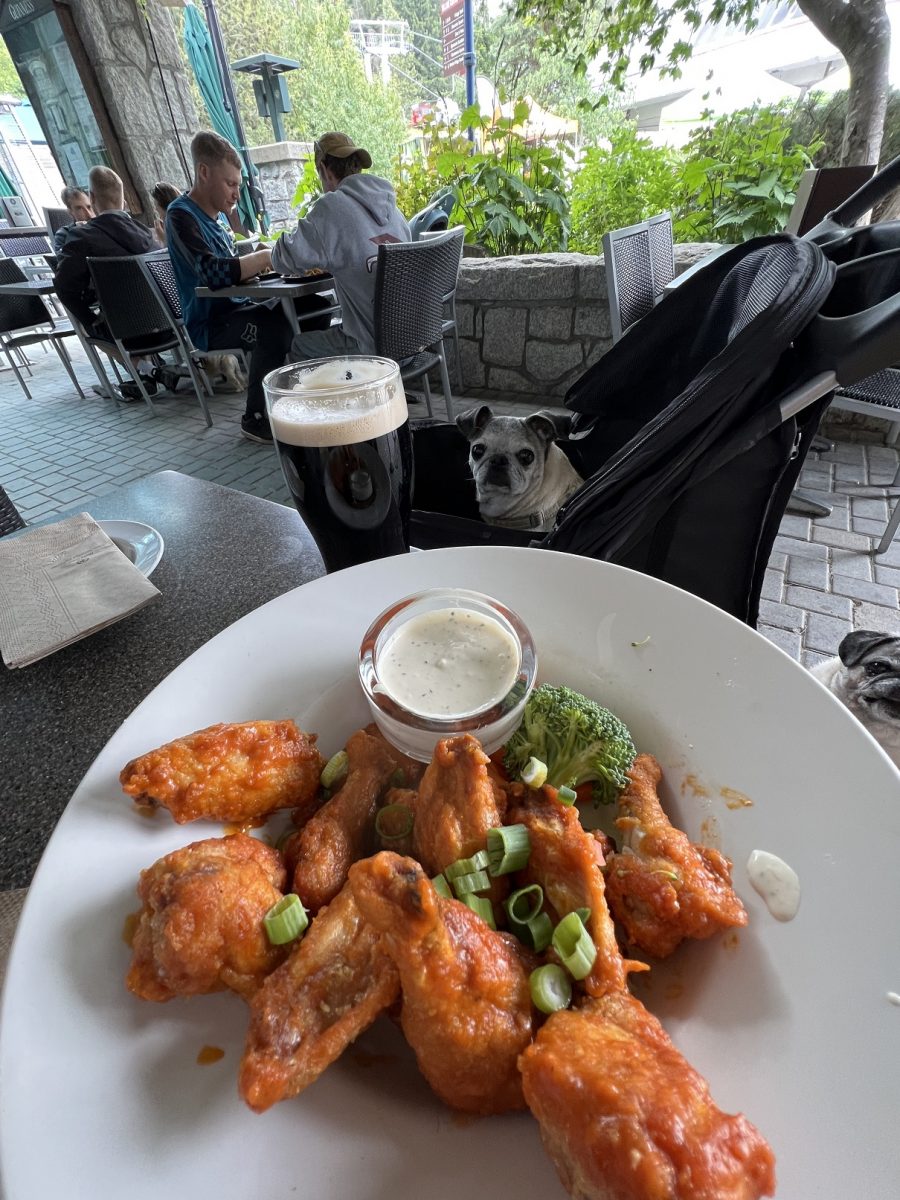
We toured around a bit more. I got lost several times. Whistler doesn’t put up an street signs, which is strange. I tried using Google maps to get back to the hotel. At a crossroads it would say, turn right on such and such street. I wouldn’t know which one was the street. But it didn’t matter because we were just wandering.
They really do know how to economize – pack a lot in a little space. Must have been crazy during the Olympics.
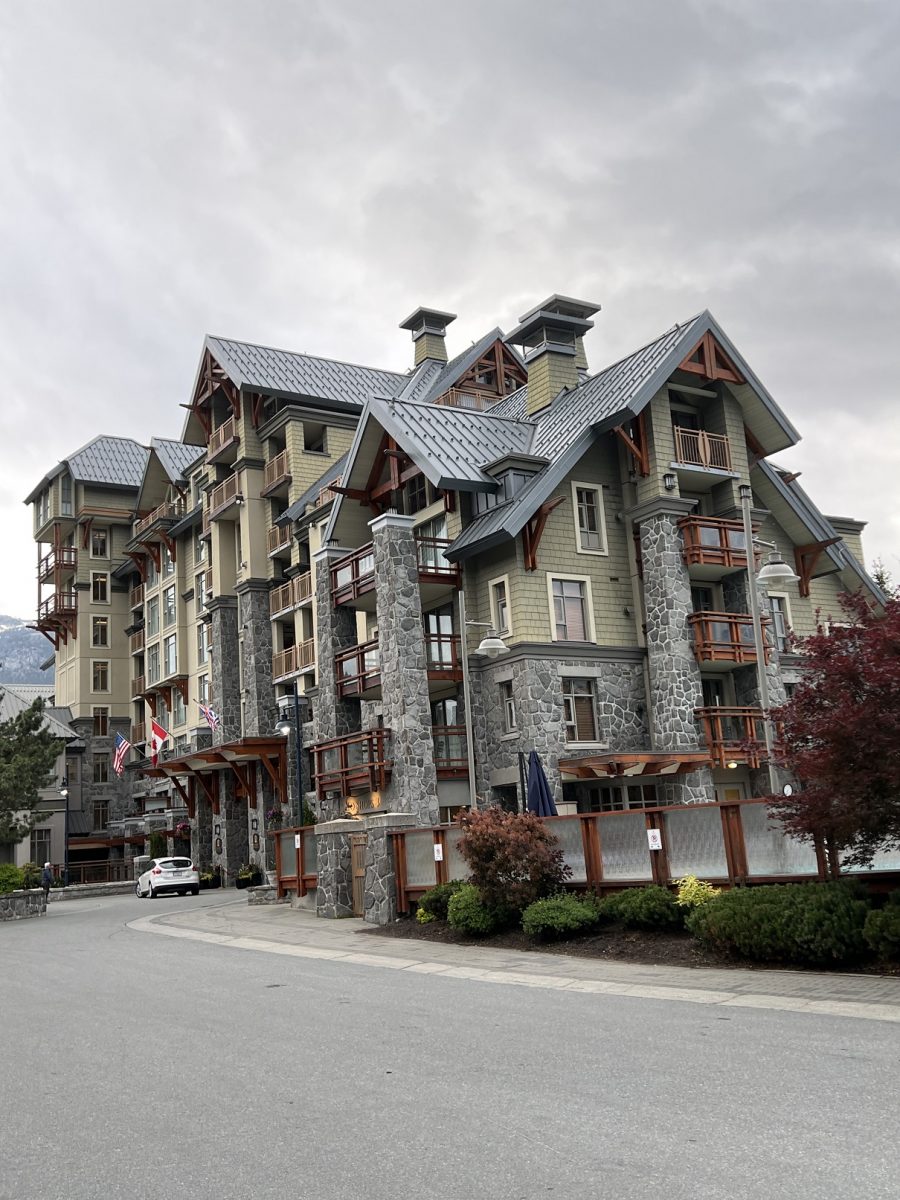
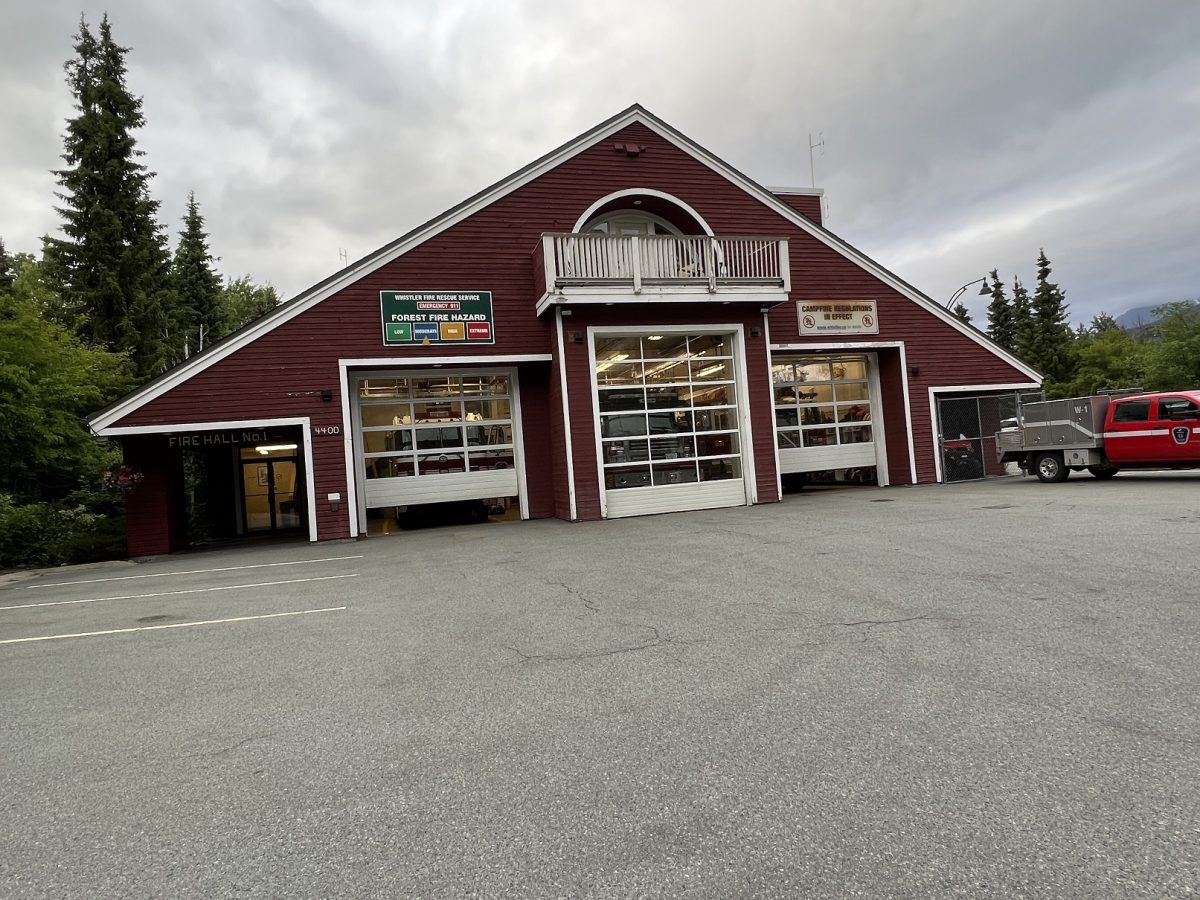
One of the restaurants we passed (and there are a lot), with The Mexican Corner. I decided to head there for dinner. There was a 15 minute wait, which is always a good sign. However I got a seat at the bar right away. They had a whole side of the drinks menu just for margaritas. I asked the bartender for a suggestion. It was very good but turned out to be $18. Wonder why he suggested that one.
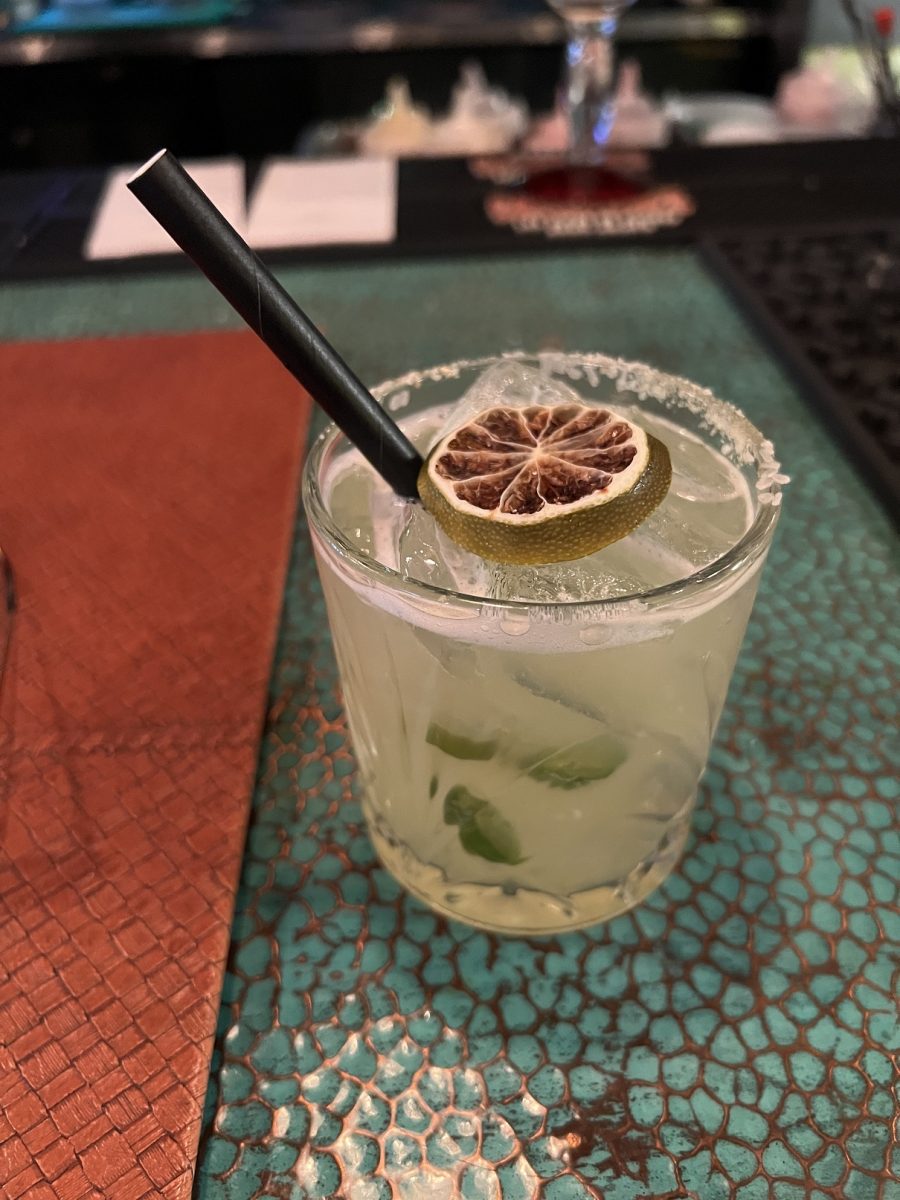
I ordered vegetarian enchiladas which were excellent. It’s little wonder the place had a waiting list. Had a Modelo Mexican beer to go with it.
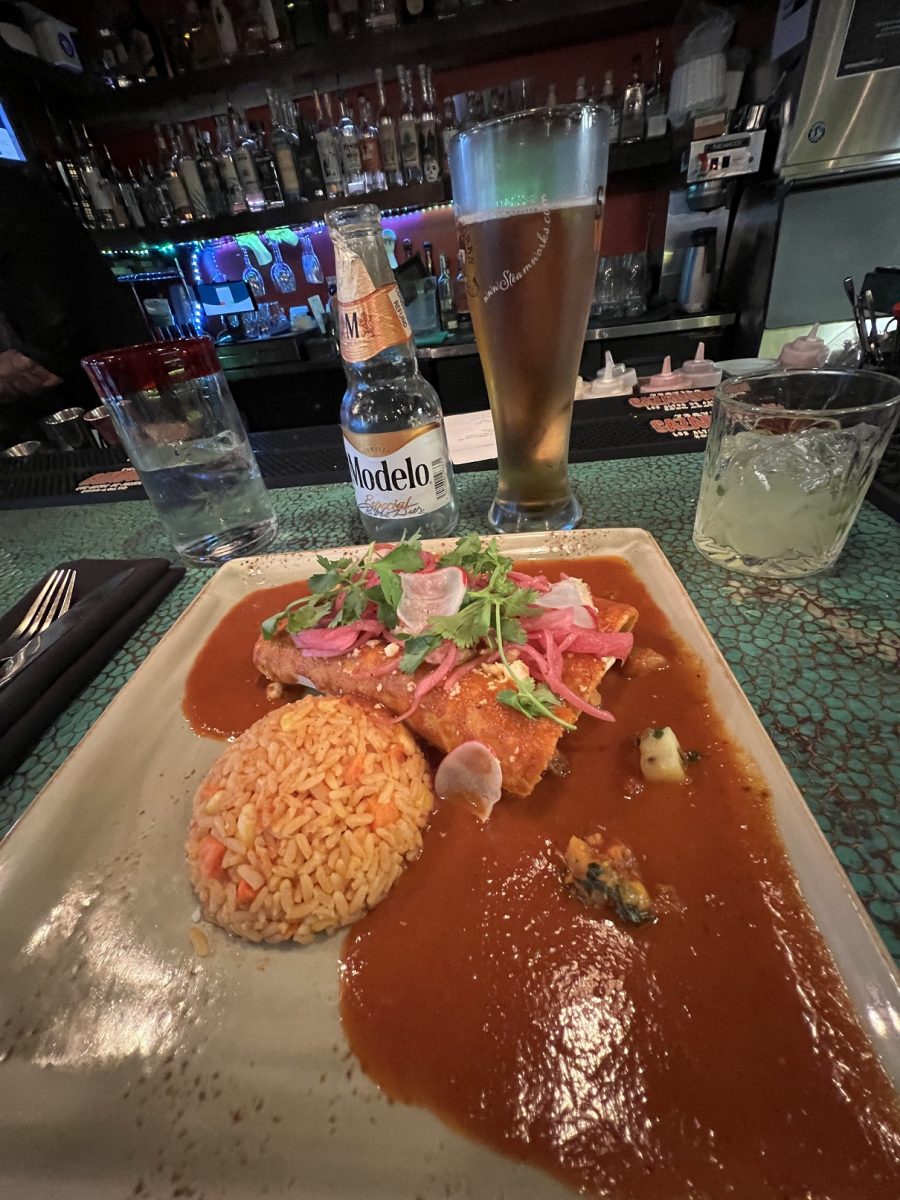
When I got back, Eve was tired out from walking around the village. I took Greta out so she could empty her bladder before bedtime. Went back in and said good night to another fine day.
